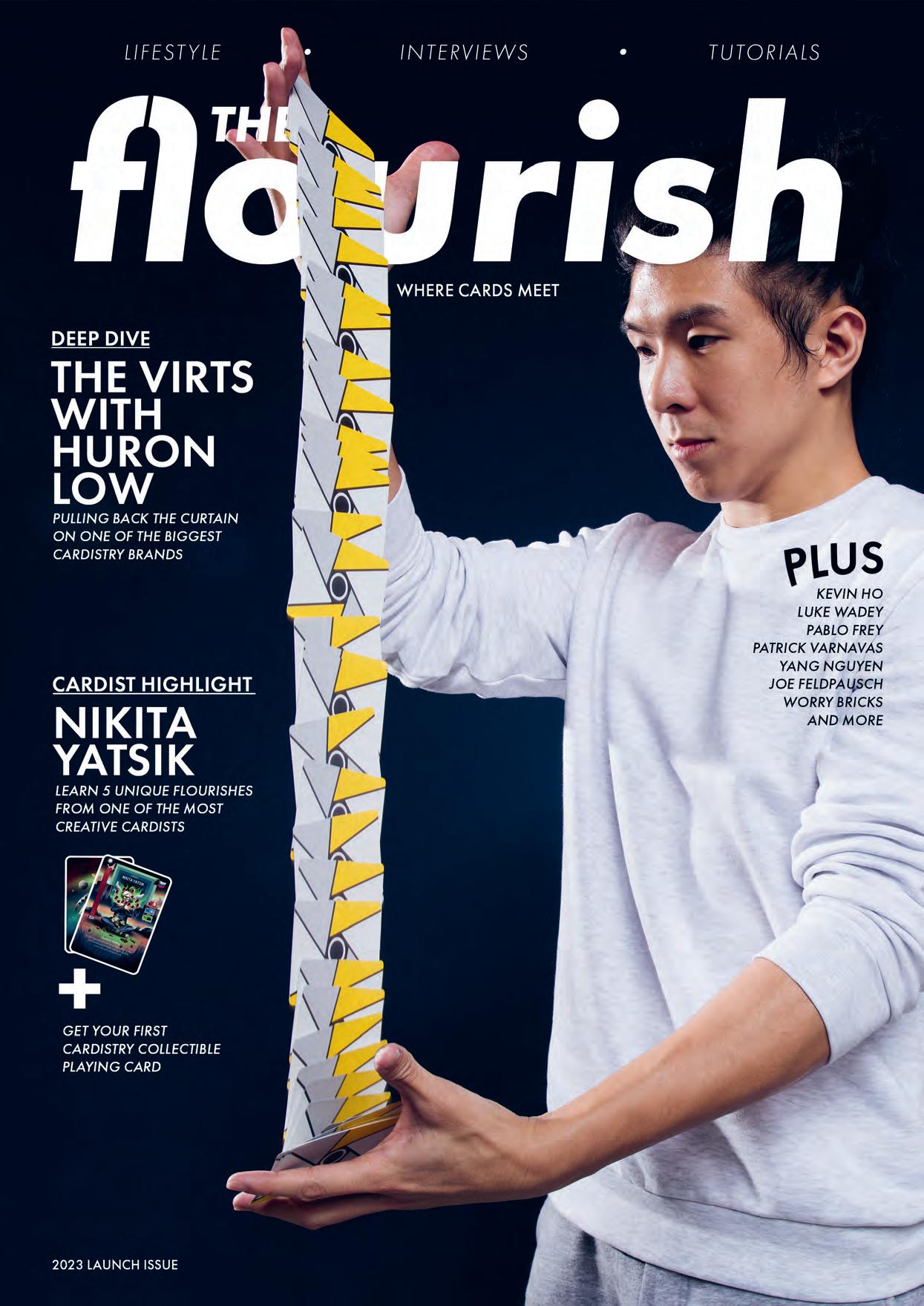
Issue 1 Enter the fascinating world of cardists and cardistry
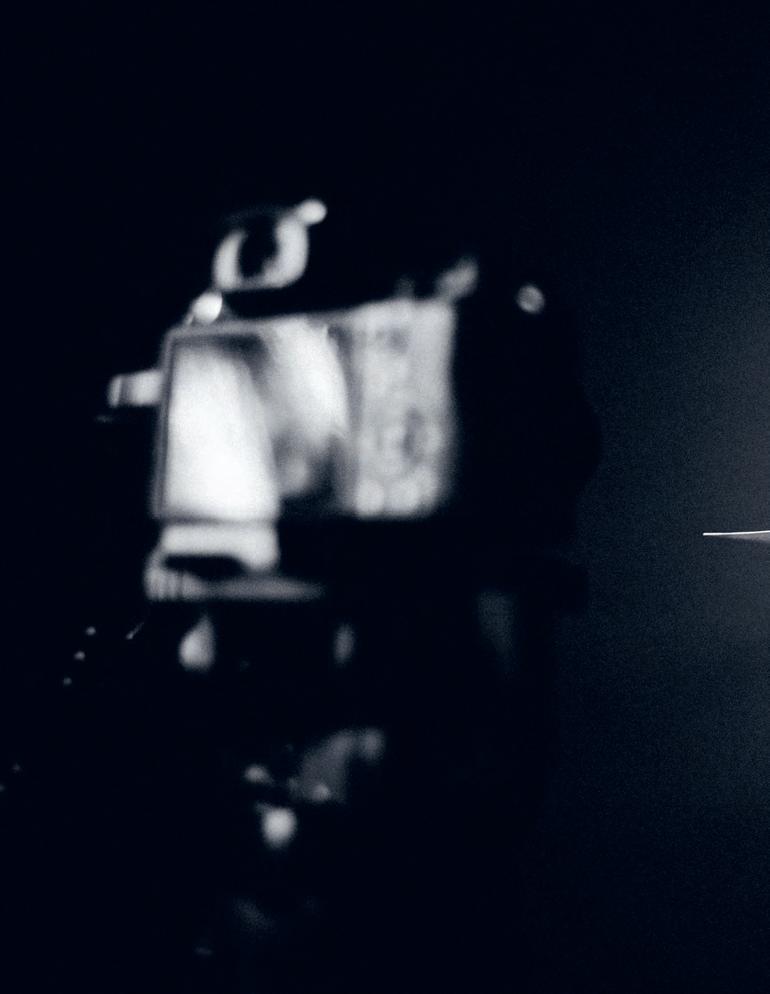
6 Deck, Tech
Kevin Ho takes us through the history of flourishing and shows how there is a direct correlation between the evolution of technology and cardistry
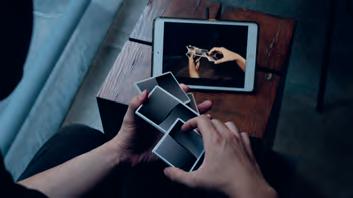
Our First Cardistry Con Experience 12 Playing Card Designs
Wen Xiu a.k.a “The Cardpenter” and Harapan Ong share with us how it was to finally attend cardistry-con after so many years
How did cardistry decks arrive to look the way they do and who were the building blocks behind the evolution? Pablo Frey shares with us his observations as a playing card designer
14
Christiaan Hau breaks down how to present flourishing to someone who knows nothing about the artform
It’s time to discuss one of the most sensitive subjects in the cardistry community: can you teach someone else’s moves or not? Yang Nguyen shares his thoughts on the subject

Humans Of Cardistry
We talk with 3 cardists from Romania which tell us about their journey as a cardist and how this has influenced their life

CARDISTRY
CONTENTS
VOICES
10
Introducing
Laymen To Cardistry 16 Gatekeeping 24 Romania
Deep Dive: The
Exclusive With Huron Low
Game Highlight For the first time, the Virts pull back the curtain and reveal their thought process behind the decks and videos that we all know and love
27 68 ↠
Virts
Dance of Cards
What does it take to create a poker RPG with card magic mechanics?
44 BESTCARDISTALIVE

We sit down with Patrick Varnavas, the mastermind behind the popular platform for high quality cardistry performances
46 How I Create

We fell in love with Joe Feldpausch’s aesthetics when filming and performing cardistry, so we asked him to take us through his creative process
50 Day Mori
We have a chat with cardist, singer and magician Day Mori about his love for cardistry
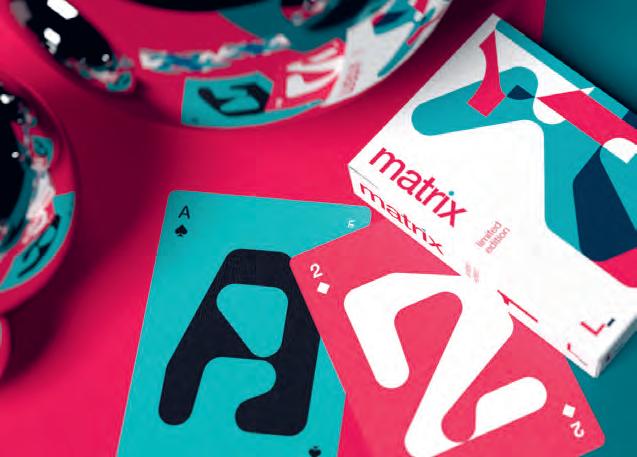
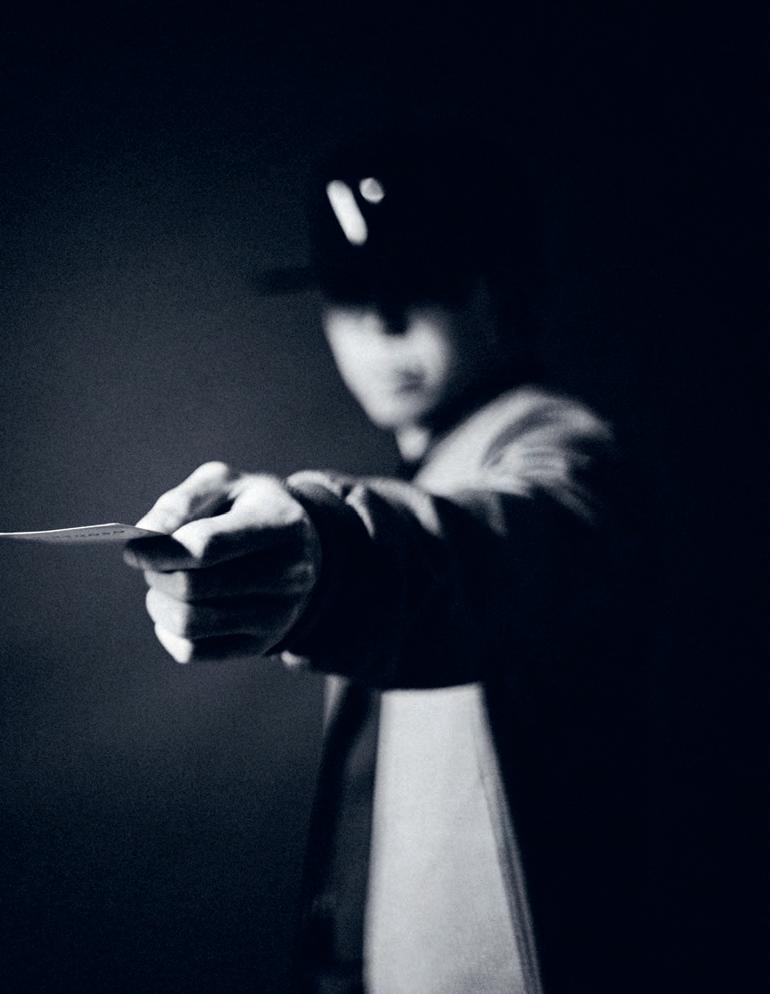
Worry Bricks

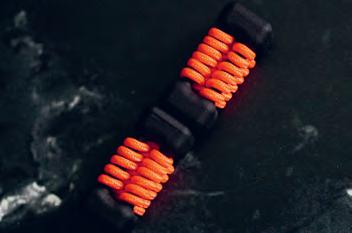
54 Matthew Samuel
Matt describes his creative process behind some of his unique cardistry cuts

58 My Journey In Art
From creating Why Frontier to dropping out of college for art, Michael Warneke takes us on his amazing journey as an artist
62 Huron Low
We find out more about the co-creator of the Virts, his journey in magic, transition to cardistry and discover some of his philosophies about life
INTERVIEWS
forget to follow us online for more unique cardistry projects Biz and Friends @BizAndFriends elisavbizau@gmail.com Luke Wadey
Don’t
Nikita Yatsik Designer Highlight Toys Highlight Cardist Highlight
beautiful journey
of
Find out more about the creative genius and learn 5 of his unique flourishes
With a portfolio of over 70 printed decks, Luke has been creating cards with a very unique aesthetic Weston Hamilton unravels the
he’s taken in order to create his brand
fidget toys
76 86 90
DECK, TECH
How cardistry evolved as an artform
 by Kevin Ho
by Kevin Ho
The evolution of cardistry throughout the years has advanced in direct correlation with the progression of technology in the real world.
Let’s flash back to the beginning. In ye’ olden days, the only way to learn a move was from a teacher in real life, should one be lucky enough to have the opportunity. Picture an apprentice waiting in the pouring rain outside a master’s abode for days before being granted access to the inner secrets of the Charlier Cut, and you get the idea. Because of this oral tradition, the spread of card handling methods was few and far between.
With the advent of the printing press, people had an avenue to record the methodology of cardistry for posterity. With illustrations and descriptive text, publications like The Expert at

the Card Table allowed interested parties to learn moves without the presence of an in-person teacher. This form of instruction continues with works such as Jerry Cestkowski’s Encyclopedia of Playing Card Flourishes, and such instances as the booklets by the Danes.
In the late 20th century, home video became an accessible medium for recording flourishes, and as such, we had notable releases such as Brian Tudor’s Show Off and Dan and Dave Buck’s Pasteboard Animations that not only taught moves, but also showed the viewers what those moves looked like. No longer restricted to having to imagine what a move looked like from interpreting it from the page, the average enthusiast now had examples to follow directly along with. This also helped spread the art of cardistry, as people who had no idea what it was before had the chance to be impressed and inspired by performances without having to see the art form being performed live in person.
Later, DVDs became the medium of choice, with Dan and Dave Buck’s The System and The Trilogy being standout examples. This continued until the death of physical home media down the line due to on-demand videos
and free tutorials.
Another invention of the late 20th century, the internet, was also responsible for a major advancement in cardistry. As one can surmise from the previous paragraphs, being able to discover cardistry prior to the internet could be quite rare: either through seeing a live demonstration or by stumbling on a book/VHS/ DVD in a magic store or catalog. With the internet, one could stumble across cardistry on niche websites such as Cheaters Cheater or Superhandz, with each even hosting tutorials with varying degrees of access depending on the user’s status on these message boards.
The internet continued to provide another significant avenue for cardistry-sharing in the form of 2005’s viral sensation, YouTube. Before YouTube, uploading and sharing videos was limited to either self-hosting on one’s own platform (which required rudimentary web hosting knowledge), or being at the whim of a message board’s own video hosting system, which could be limited to the limitations, rules, and scope of said website. After YouTube, someone who wanted to share
6 THE FLOURISH |
Kevin Ho shows how cardistry has evolved over the years
Wen Xiu and Harapan Ong talk to us about their first CC
Christiaan Hau shows how to present cardistry to others
Pablo Frey talks about how card back designs have evolved Yang Nguyen tackles a hot topic in the community
�� 6 * 10 14 12 16 deck,tech CONTENTS our first cardistry con introducing cardistry to laymen playing card designs gatekeeping
the cover of jerry cestkowski’s famous book on flourishes
a performance or a tutorial could simply do so with the click of a few buttons, and easily share the link to their creation with others via instant messaging, forums, or by embedding them on websites. YouTube’s algorithm (which continues to evolve and improve) also allows for the odd upload to find its way to the average non-cardist, thereby introducing them to the art form in a serendipitous fashion. Cardists such as Virtuoso and Zach Mueller have achieved astounding viral success with the platform, racking up millions of views each.
Refocusing back inwards for a moment, there was another movement that allowed for a notable advancement within the online cardistry community: video chatting. A lot of cardistry-sharing before this mainly happened after the fact: someone would post a message or a video, people would respond to it, and the cycle would continue. With video chatting, cardists could come together one-on-one on services such as Skype, or in groups through platforms such as MeBeam and Tinychat, to jam together and share material they were
working on. Jams were nothing new, of course - by that time, countries like Singapore had sizable cardistry communities that met on a regular basis to jam - but with video chatting, cardists from the world over were no longer restricted by geography or time zones, and could hop on to the web at any time to hang out with friends that shared the same interest as them. And although services like Skype, MeBeam, and Tinychat have either dropped in popularity or gone the way of the dinosaur by now, video chatting as a way of jamming continues to live on in places such as Discord, where multiple servers exist that cardists can gather together in real time to jam.
Mobile phones became popular in the late 20th century as well, but it was the advent of smartphones such as the iPhone in 2007 that really changed the game for cardistry. Video production could prove complicated for the neophyte: for example, with miniDV, one had to buy a miniDV tape, set the camera up on a tripod, record the footage, make sure one had FireWire installed on their computer, plug the camera in, import said miniDV footage, edit it with a program such as Windows Movie Maker or iMovie, export the footage, and then upload it on YouTube. Smartphones cut out a majority of the steps in between conception and completion: with a smartphone, one could record something like a one-handed cut in one hand while the other hand was filming, and a few buttons later it could be on YouTube.

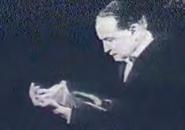
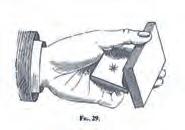
In 2010, Instagram came along and became the new watering hole for cardistry. Previously, cardists had to rely on websites like TheCuso.info, Kardistry.com, or the occasional YouTube subscription for new content.


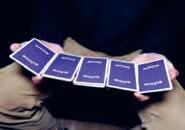





7 7 THE FLOURISH |
realease was on vhs
zach’s video “floating cards” reached 1.8 mil views.
CARDISTRY VOICES: KEVIN HO
“
...people who had no idea what it was before had the chance to be impressed and inspired by performances without having to see the art form being performed live in person.
“
kevin ho
Alexander
Brian
Dan
Dimitri Arleri Noel and Aviv 1877 1926 1990 1999 2003 2009 2018 CARDISTRY OVER TIME selected timeline �� �� �� You can find Kevin here: @kevdoescards
cardists at the anual cardistry convention which is held somewhere different each
year.
Edwin Sachs Houdini
Popov
Tudor
and Dave
WRITTEN BY YANG NGUYEN EDITED BY NATHAN NGUYEN
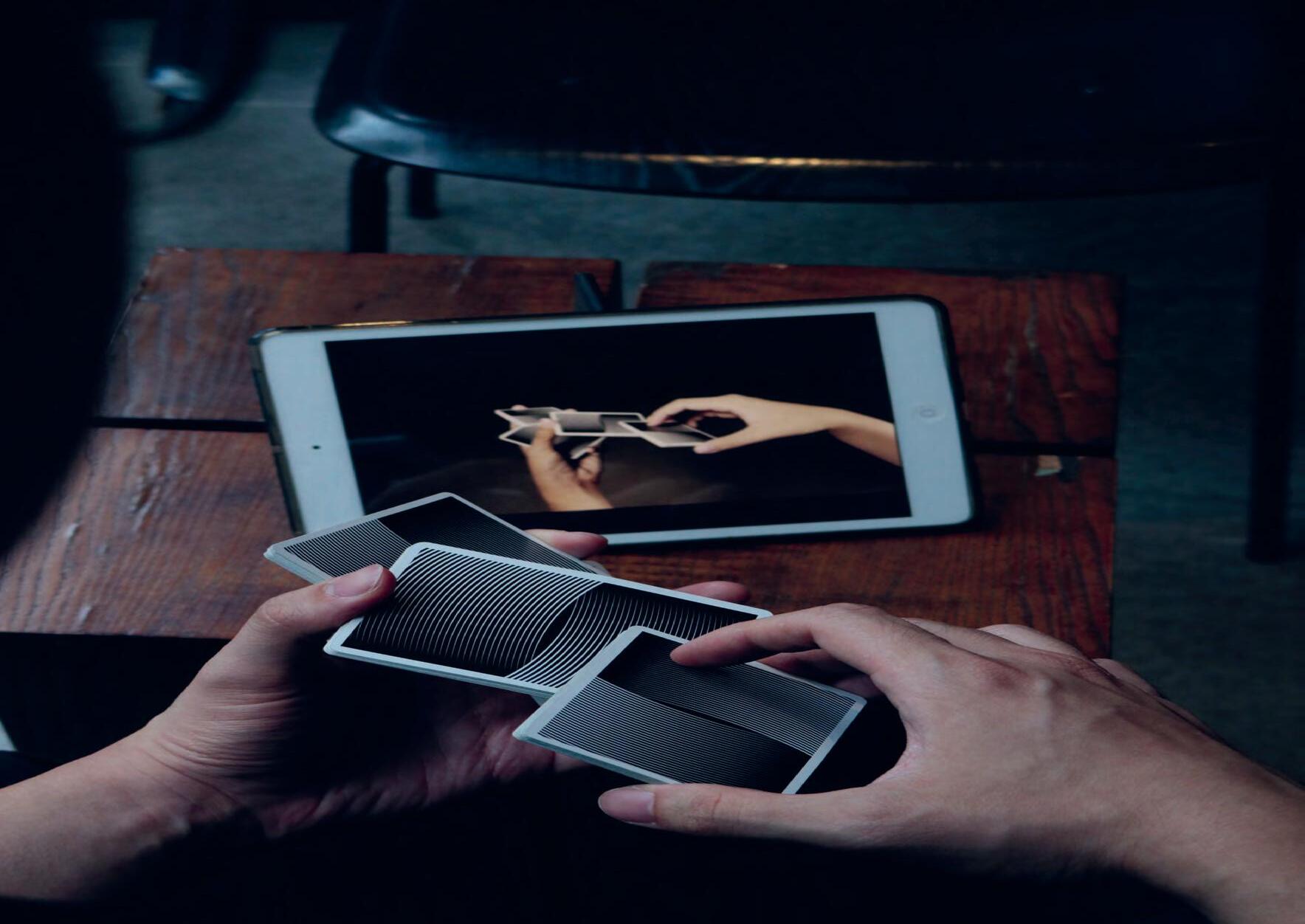
GATE KEE P ING
Not too long ago, I had the pleasure to chat with Brian Tudor, the creator of the One Hand Revolution cut. Even if you were not familiar with Brian before (which is rare), you might still know of his iconic cut, which has laid the foundation for many one hand cuts and combos, and is widely considered a basic move in cardistry. You can easily find plenty of tutorials on YouTube for the One Hand Revolution, taught by different people, as well as see it in tutorial DVDs sold back in the day such as Vol 1 Genesis by Andrei Jikh. With that in mind, it was a surprise to me when Brian shared that no one has ever reached out to him to ask for his permission to teach his cardistry moves. That surprised me because the cardistry community very often frowns upon the act of teaching other cardists’ moves without their permission, especially when the move is initially taught in a paid tutorial. In this case, One Hand Revolution was taught in Brian Tudor’s Generation X and Showoff 1 instruction DVDs.
Being in the cardistry community, you may have come across comments on the internet criticizing cardists who teach moves that they didn’t create. In general, this is considered disrespectful by a significant part of the community, and even though there are a lot of nuances in each instance where the tutorial may be free or paid, with or without the original creator’s permission, there is an overall negative attitude against the act itself.
Cardistry was the first skill-based hobby community that I have submerged myself in, but far from the only one. Having followed a
number of other subcultures, I can tell you that this attitude towards teaching is not universal. If you have been on the internet trying to learn beatboxing for instance, you can see a lot of beatboxers uploading videos teaching other beatboxers’ sounds or beats without experiencing backlash. A juggling pattern or technique can be taught by multiple different people online. No one seems to hate people for teaching dance moves that aren’t theirs. If you are fresh into cardistry, having come from another hobby community, you might find this odd and wonder why it works this way.
As to why this attitude is the default for cardistry, I am not 100% sure, but I do have a few guesses. Cardistry has its roots in card magic, which is a field all about secrets and misdirections, and the conventions of how magic tricks and techniques were taught and learned could have had a big impact on cardistry.
On the other hand, cardistry as an art form also inspires a view of cardistry moves and techniques as pieces of intellectual properties, which are conventionally protected in a certain fashion. But should we always do it this way?

As such, I would like to present a number of somewhat scattered thoughts that I had on the topic, as well as examine whether this mentality is still necessary, or even productive to the art form in the long run.
The following article is a (somewhat controversial) take of mine on how we as the Cardistry community should view the process of making and distributing tutorials, specifically the asking-for-permission aspect of it.
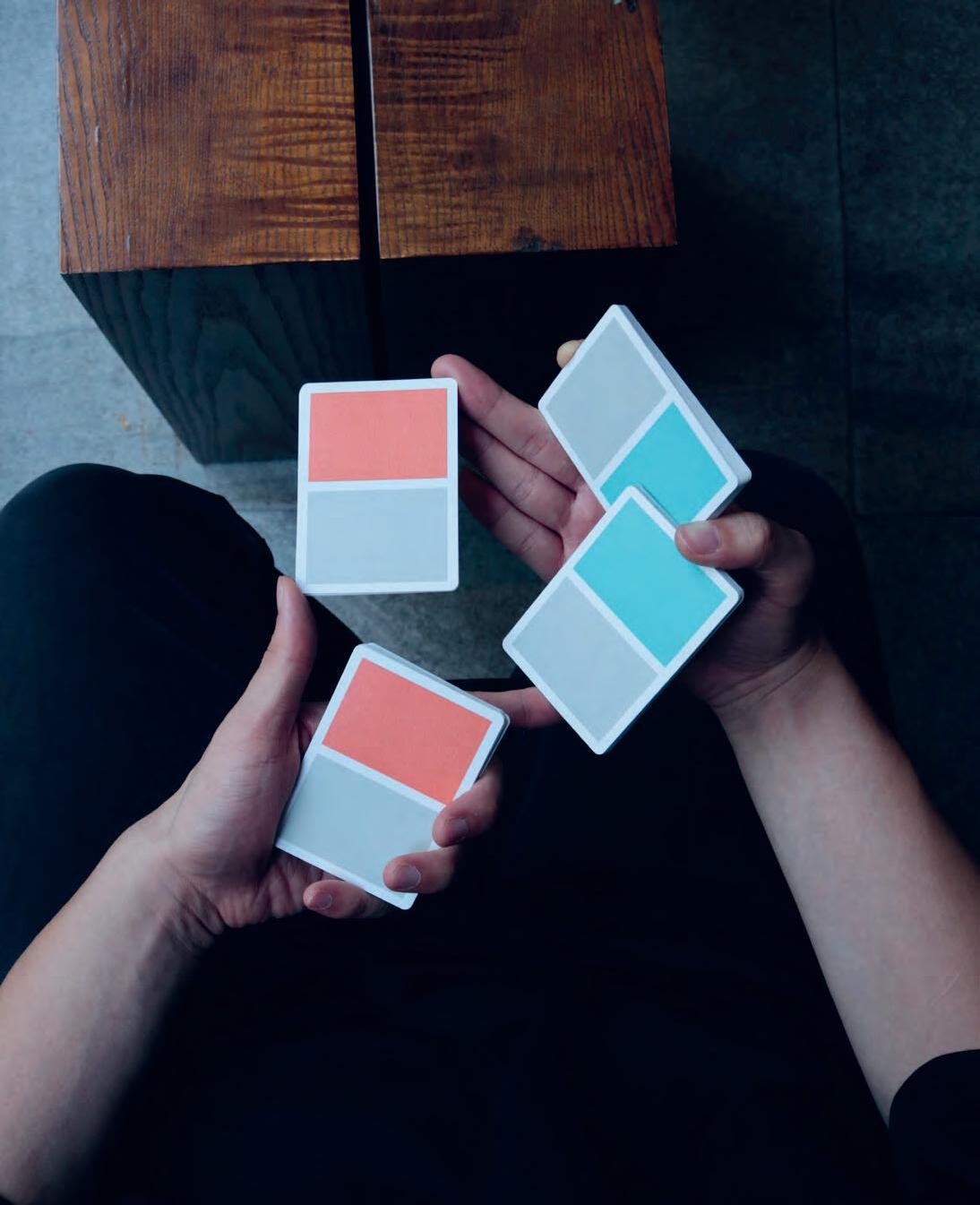
Putting my money where my mouth is, I would like to expressly grant permission to everyone to teach any move of mine without having to ask me first, as long as you give proper credits. You can freely make free or paid tutorials for my moves.
I only have 3 requirements:
• Write my name correctly - Yang Nguyen
• Write the name of the move correctly
• State clearly in the tutorial whether your method of doing the move is the same as mine. If you are unsure about it, say you are unsure about it. Although not necessary, you can always message me to ask about that.
DISCLAIMER
• This article does not support the notion that all tutorials should be free.
• This article does not support the notion that paid tutorials should not exist.
• This article does not support people teaching moves without proper credits to the original creator or try to claim others’ moves as their own when teaching it.
• This article only deals with the matters of whether one should be allowed to teach someone else’s moves without permission, with proper credits to the original creator of the move.
most tutorials adopt an over the shoulder view
OPENING WORDS
yang performing a cardistry display with tetra playing cards by lotusinhand ��
�� CARDISTRY VOICES: YANG NGUYEN
COUNTERARGUMENT
Against maintaining the code of honor to prevent teaching incorrect techniques
One common argument against freedom of teaching is that if anyone can teach the same move without passing a bar of skill requirement, then we will get a lot of filler tutorials that are of low quality. However, in practice, I think what we got was the opposite effect.
Channels like “Sendimental” and “Irehman7” exist on youtube and release a very sensational, clickbaity format of video with tutorials that are quite often sloppy with incorrect techniques. But why are we lacking a middle ground where actually skilled performers within the community are making these third-party tutorials instead?


I believe that happens due to this very code of honor we are discussing. Those who can perform the moves flawlessly are usually people that have been practicing cardistry for a long time and have been active in the community to a certain degree. As a result, they are aware of the negative attitude against making unoriginal tutorials and therefore steer clear of this to maintain the reputation and goodwill they have with the community. On the other hand, those who haven’t practiced much and are not active in the scene either don’t know of this unwritten rule or don’t have much reputation to lose. Therefore, they are not afraid of the backlash to the same degree.
But where does that leave us? When it comes to moves that are hard to trace down, beginners are stuck with these half-baked, low quality tutorials because a better version simply does not exist. There is a certain irony to this situation where the code of honor may have hurt the situation instead of helping. There is also an opportunity here for the community to relax its grip a little and allow the volume of hidden knowledge we have to be channeled productively, in my opinion.
Once veteran cardists feel more open to making tutorials for moves that aren’t theirs, people will get to see these higher quality tutorials and stop giving attention to the bad ones. Those bad tutorials are only getting views because there aren’t any good tutorials competing with them. When everybody is allowed to compete in this “tutorial economy”, with any luck, bad tutorials will eventually cease to exist because they simply can’t compete.
You can find Yang here: Photos and some flourishes done by: @yangcardistry @unfinished_stuff
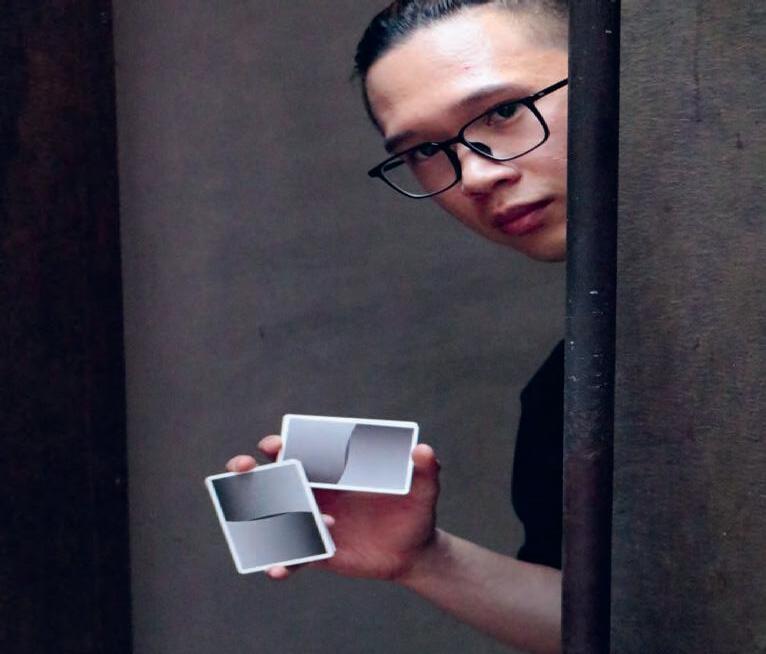
be taught by different cardists will then give the learners different perspectives on the move, enriching the learning experience.
Additionally, the method given by the original creator of a move may not be suitable or useful for everyone since everybody’s hand size and fingers are different. It is not uncommon for people with smaller hands to have to modify the structure of moves to suit their own hands. The community really lacks perspective and tips from small hand cardists, which is also something I would love to see more of.
Ihope I am not coming off as trying to force this view upon anyone reading, nor that after publishing this article I will start teaching other people’s move without their permission. My wish is that the community may start looking at this tutorial phenomenon under new lights and maybe give the aforementioned issues a second thought. At the end of the day, the most important thing is we get along and have fun together as a community. My stance is simply one that prioritizes community growth, and based on that I believe we could do more with the process of making tutorials than just looking solely at the ownership and protective aspects of it. I believe this will not harm the creators and the community, and will benefit us all in the long run.
Beside pointing out the negative aspects of this matter, I try to come up with some practical solutions.
For example, to avoid upsetting people who don’t want their moves to be taught, but still make progress on the matter of making cardistry more accessible, we can possibly create a system similar to Creative Commons.
Specifically, setting up a website that allows cardists to voluntarily list themselves there and grant the public permission to teach their moves freely When a person plans to make a tutorial, they can go to that website to check to see if the move is in the free-to-teach list. However, this idea is still in the infant stage. Stay tuned for development in the future.

22 THE FLOURISH |
��
flourish
one
�� 22 THE FLOURISH |
: scissor cut, one of the oldest
handed cuts in the books
52 Plus Joker facilitates the collection and trading of antique, vintage, and modern collectible playing cards & other related ephemera. It’s only $25 to join for an entire year. Many magicians and cardists are members. Plus, we seek and welcome new members, whether they are experts or novices, to playing card collecting.
Join us today by visiting 52PlusJoker.org
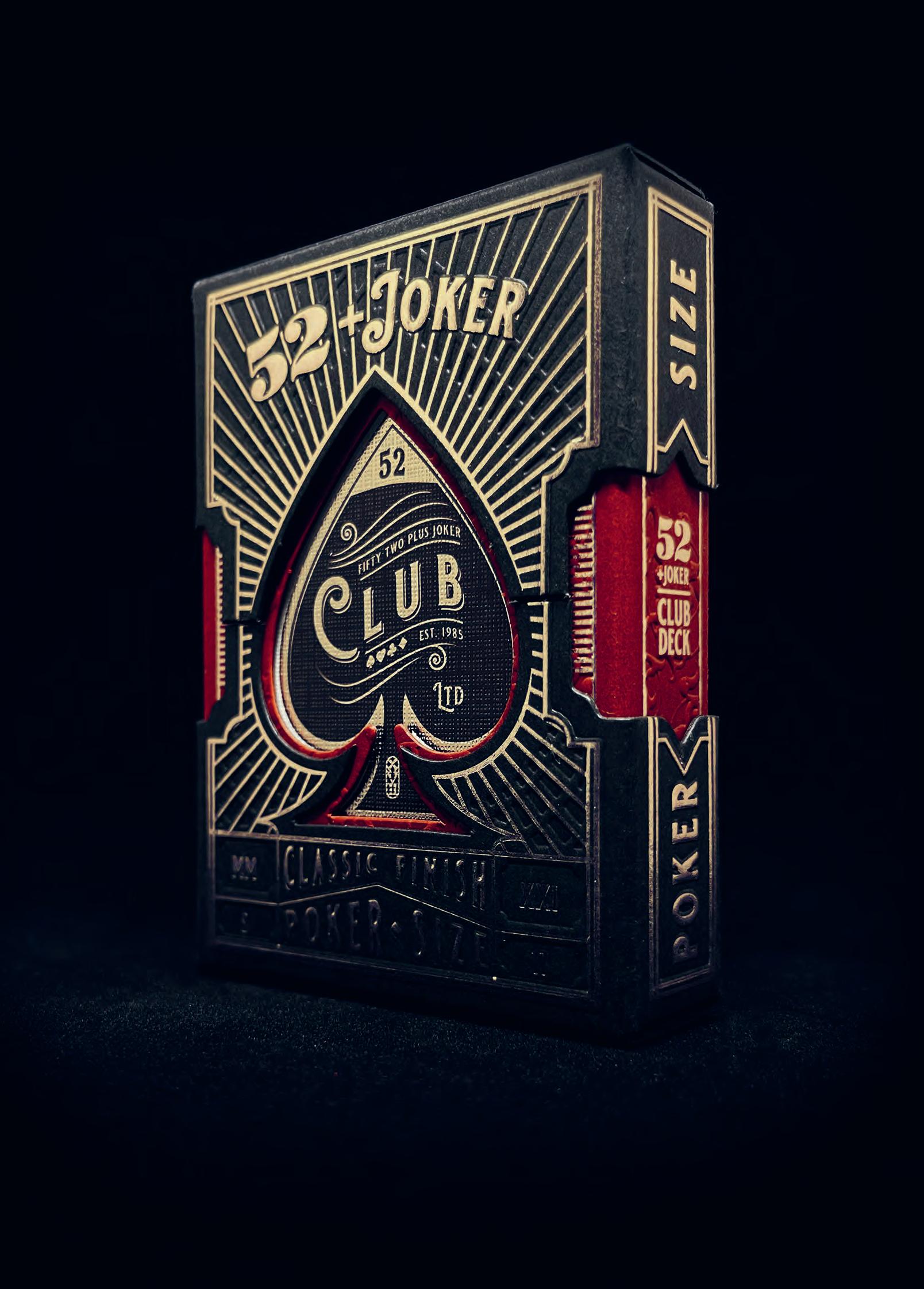
HUMANS OF CARDISTRY
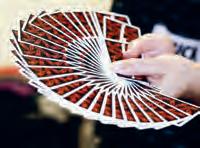
self-taught o.g.
My name is Sorin Vestemean and I’ve been a cardist since 2005. Back then, I lived in a small town called Ramnicu Valcea and had very limited access to playing cards and cardistry information. The only cards I could find were plastic ones and Bicycle Standard decks. The only source of inspiration I had was the internet which was not much, and it’s where I saw some videos of cardists doing amazing moves and flourishes. But those videos were not enough to teach me how to do them. There were no tutorials or explanations. I had to figure out everything by myself, by pausing the videos and studying them carefully. Sometimes I even printed out screenshots of the videos and tried to follow them step by step, placing them in a circle and practicing until I got it.
It was hard and frustrating, but also rewarding and fun. I learned some classic moves like Sybil, Pandora, Phase, Eye Cut, and Helix Cut. They all required a lot of skill, dexterity, and creativity to execute. I practiced every day for hours, until my fingers were sore and my cards were worn out. I also started to experiment with my own ideas and variations. I tried different grips, cuts, fans, springs, spreads, twists, flips, cascades, shuffles, and throws. I combined different elements and created new sequences and routines.
I developed my own style and personality as a cardist. Cardistry became my passion and my art form. It gave me joy, confidence, and satisfaction. It also connected me with other people who shared the same interest and love for playing cards.

One of them was Dinu Liviu-Stefan, who I met after 1 year of practicing cardistry. He was also a cardist/magician who lived near me. He was my competition and my motivation. We challenged each other to learn new moves and improve our skills. We also helped each other with tips, feedback and compliments.
Today, after more than 15 years of practicing cardistry, I still enjoy it as much as ever. Cardistry has become a part of who I am and how I see the world. It has taught me many valuable lessons about patience, perseverance, discipline, creativity, expression and fun.
This is my story as a cardist.
On YouTube:

Sorin used to have one of the most successful and known channels in Romania. He did deck reviews, cardistry videos and more. You can find him at “NewMagicFilms”.
rubix speedcubing is 10s. Programer for 6 years. Camera guy. Goes to the gym. Is learning to play the piano.

26 THE FLOURISH |
Name: Sorin Vestemean Cardist: 18 years Age: 32 Lives in: Bucharest, Romania.
His
romania ◼
deep dive
THE VIRTS
with Huron Low
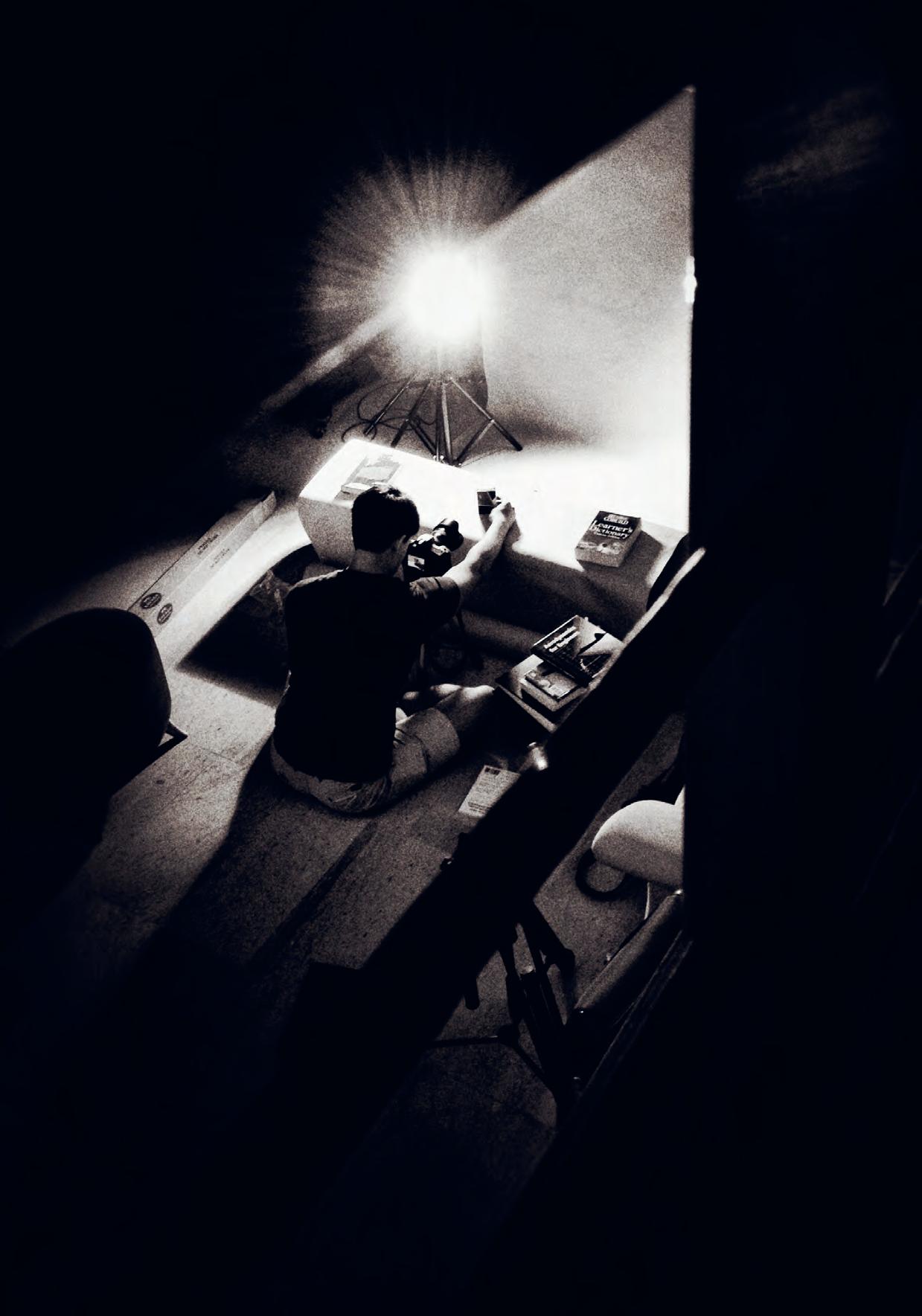
27 THE FLOURISH |
Huron Low deep dive with...
From their videos and flourishes to their iconic deck, the Virts have influenced and inspired the entire cardistry world. Today we sit down with Huron Low, one of the co-founders of the team, to discuss their history, values and how exactly they “changed“ the cardistry world.
Words by Elisav Bizau
When we contacted Huron about doing an interview for the magazine, he was very open to it. What neither of us expected was for the interview to turn into a 14 page feature article where everything about theVirts’s journey is explained in beautiful detail.
Together with his replies, Huron added, “Feel free to tell me if you need anything shorter. Cause it’s all pretty long now haha.”. The article takes about 30 minutes to read, but, if you grew up like us watching theVirts grow and continuously innovate what can be done with a deck of cards, then reading this uncut interview will bring you much joy.
Close ups. Shuffles. Snappy cuts timed to dynamic music. Displays and over-the-top badassness. I am rewatching theVirts’s video “Reintroduction” from 2008 and it yells out theVirts just as much as all videos you guys have put out since then.
The earliest video I could find of you flourishing is this one titled “That Night” which claims to have been filmed in 2004, 19 years ago. Compared to the first one I mentioned, this one is laid back and fun, more of a jam than an official team video. Still, this was the year in which theVirts was formed in a way, making this the earliest Virts video
In “Reintroduction” viewers can read “But now, they’re back.”
Can you talk about how theVirts was formed, how all of you met and decided to form theVirts together? Also, who came up with the name?

“The Virts” is actually a short form of “Virtuoso” — kinda like what the name “Coke” is to “Coca-Cola”.
As for the name “Virtuoso”, the story of how we formed and “came up” with the name was a happy accident more than anything.
It all began with a dude I met at a magic store named Kevin Ho. And we started hanging out a ton because we both loved magic, film, and of course, Cardistry.
One day (back in 2004 or so), Kev excitedly shared with me about a short film competition happening in Singapore. And we thought, “Hey, wouldn’t it be cool to enter with a short film of Cardistry?”
But there was one little problem: we weren’t skilled enough at Cardistry to showcase everything we had in mind (we were definitely not virtuosos). So, we decided to search for other Cardists who could help make this video happen.
The other problem? While we had managed to find two other Cardists in Singapore (Elijah and Sylvester) who were up for collaborating on a “short Cardistry film”… we had no idea what to name this video.
So, one day, while bored in school, I flipped through a dictionary and randomly stopped somewhere — and found myself at the “V” section. And lo and behold, on the word “virtuoso”. I read the definition, and was like
“Wow, this works”… and that became the title of our first video.
Being pretty clueless kids, we were super proud of what we’d come up with. So while we had no idea why we didn’t win the competition (hint: it was terrible)… we knew we wanted to continue making cool Cardistry videos together. And so, we formed a team of four Cardists, and un-creatively named ourselves after the video — Virtuoso.

Then as the story goes, over time, we went from friends making home made Cardistry videos, to friends who decided to start a brand together and do this for a living.
You guys started being more active (on Youtube) from 2010, posting videos such as INK, Gambit, The Anaconda DvD and a series of free tutorials. Tell me a bit about how you guys have planned and created videos throughout time. What is your team’s creative and work process?
It might sound strange, but when it comes to creating videos, we almost never begin with Cardistry moves or existing Cardistry videos. Instead, our conversations typically begin with one big question:
*“What’s inspiring you right now? Or what has inspired you for awhile now that you’d like to touch?”*
We love movies and filmmaking, so this often begins in the visual realm — a scene from a movie, a title sequence from a TV show, a cinematographic technique, a visual theme ��
28 THE FLOURISH |
↠
28 THE FLOURISH |
All the members of theVirts back in 2015.
from a video, and beyond. And this often involves us bringing the stuff we’ve curated (video clip, links, photos, and more) to a discussion and sharing it with each other.
From there, because we’re also music lovers and avid readers, our ideas quickly build upon each other and extend into the auditory and reading realm as well — songs we’ve been listening to, books we’ve been reading, quotes that we love, and beyond.
As for the Cardistry, it often only enters the picture after we’ve found the perfect song. And that’s because the right song can inform the entire arc of a video… the hook, the build-up, the peak, the lulls… and more. Then, as we listen to a song we’re all inspired
VIDEOS
INK | 2009
GAMBIT | 2009
2007
CARD SPRING TUTORIAL | 2009
TEST ROOM | 2012
ANTI-GRAVITY | 2015
FLICKER SHOT | 2015
LIQUID PAPER | 2016
by, we often begin to see moves in our heads that fit the different sounds, instruments, riffs, and beats that we hear.
It’s from here that we come up with a move list, organize it into a shot list with the angles we’re looking for, rehearse (or pre-visualize) the camera moves… and finally get down to shooting.
Of course, shooting involves art direction — which goes into things like wardrobe, lighting style, colors, and more. And from there, we enter into the editing process, the color-grading, audio mixing, title design… along with countless tweaks and debates until we’re happy with the outcome.
If it sounds like a pretty slow and time-consuming process… that’s because it is. But for many of our videos (definitely not all!), we find it more fulfilling than simply grabbing a camera and filming whatever comes to mind.
So that’s the short answer.
And if you’re interested in a deeper dive with some examples, read on.
In Ink, we were heavily inspired by an Apple ad featuring Coldplay’s Viva La Vida with motion graphics in that style.

For Gambit, we drew inspiration from the speed ramps in Zack Snyder’s “300” (side note, we love Larry Fong’s cinematography).
And for Test Room, we re-imagined Guy Ritchie’s “Snatch” opening titles as a Cardistry video.
integrating Cardistry with fashion and culture. And so, we drew inspiration from the stark white backgrounds utilized in many men’s streetwear campaigns at the time. One campaign video we were particularly inspired by was Rag & Bone’s Fall/Winter campaign featuring dancers Baryshnikov and Lil Buck, which influenced the editing style as well.
And interestingly, by expanding our perspective beyond simply “capturing Cardistry” to that of capturing fashion and the movement of actual people… the frame of the video’s cinematography literally expanded as well; going from the typical close-up capturing of a Cardist’s hands, to capturing the full body.

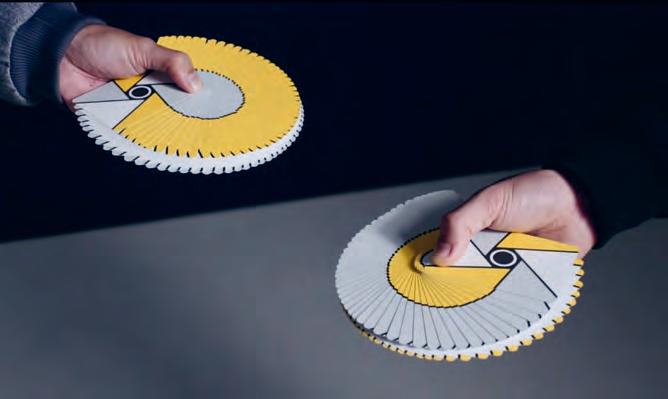
It’s these inspirations from various sources that make up the typical Virt video.
NOW YOU SEE ME SHUFFLE | 2019
SUPER BOOMERANG | 2022
RISE | 2017 GET YOUR FREEDOM FEAT.
ELIOT SLEVIN | 2022
TIDES | 2022
We’re also huge fans of slow-mo done right — for it brings out intricate surreal details that complement Cardistry beautifully; details often privy only to Cardists who have come to know their moves intimately. And so, slow-mo’s something that we’ve always aspired to explore in deeper and deeper ways.
For example, when conceptualizing Air Time, we’d figured out a “home-made” method to create slow-mo scenes you’d typically only see in ultra high budget productions… and just had to try it.
On top of that, we’d been wanting to take the art form out of the bedroom (seen in so many videos at the time) and to begin
(On a side note, if you pay attention to how Cardistry videos and brands have visually shifted since then, Air Time probably marks the moment where fashion began to make its way towards its prevalence in Cardistry videos and brands today.)
Of course, that’s not to say that inspiration never begins with Cardistry itself.
Sometimes, the question of “What’s inspiring you right now?” begins with the deck we’ve created. We ask ourselves what we find most meaningful about the deck, and how we’d like to express those elements.
For example, in Liquid Paper, we were showcasing the SS16 deck; a deck which eliminated the classic white borders so the backs could connect to create new forms.
And when asking ourselves how to convey this
29 THE FLOURISH | ↠
“ “ ��
TIMELINE THAT NIGHT | 2004 DECK DESIGN REVEAL | 2012 NINJA SPRING GRAB | 2009 TO BERLIN AND BEYOND | 2016 TILL WE MEET AGAIN | 2021 STYLE | 2007 VIRTS DECK VS NORMAL DECK | 2015 CAMERA ROBOT X CARDISTRY | 2019 ANACONDA FEAT. BONE HO | 2009 NO HANDS | 2017 CARDSLINGER | 2022 REINTRODUCTION |
�� SELECTED
�� �� �� �� �� �� �� �� �� �� �� �� �� �� �� �� �� �� �� �� �� �� �� ��
Snap from their 2016 video “Liquid Paper”. The back of the cards appears to change color based on the direction in which you fan the deck . 29 29 THE FLOURISH |
When it comes to creating videos, we almost never begin with Cardistry moves or existing Cardistry.
huron low
in daren’s hands, the ss16 deck seems to have a life of it’s own.
While we’re discussing deck designs, let’s fast forward to the present moment: the new P1 deck is strikingly different from all of your other decks. You can see it as an evolution of the initial concept of making flourishes stand out even more. What brought about this change and how did you guys come up with this new design? Where did the concept of light passing through a PRISM come from?
With each Cardistry deck we create, we try to explore a different facet of expressing Cardistry.

At the same time, because of how rarely we choose to release a new decks, it’s natural to perceive what we’re doing as solely evolving the Virtuoso deck while “retiring” the previous one.
That said, I wouldn’t call any Virtuoso deck better than another. Instead, I’d describe what we’ve been doing as crafting an entire spectrum of Virtuoso deck “flavors” that people with different preferences can enjoy.
I see it as different flavors for different tastes. Different outfits for different days. Different songs for when we’re feeling different ways. We just haven’t yet made them available all at once.
And while the P1 appears strikingly different to our previous decks at first glance, our intent was to first meld some of the iconic elements from past Virtuoso decks into a new design. Then from there, to layer new ways of expressing Cardistry upon that.
For the P1, there were two new layers we really wanted to explore; something visual, and something symbolic.
Visually, we wanted to go beyond the standard 2D nature of a playing card (two flat surfaces with disconnected graphics on either side) and create a deck that was more like a 3D object, where there would be a continuum between the front and the back.
Our first prototypes testing this concept began as early as 2014 — where we tested our back design mirrored on the faces; with the signature ring passing through to the face.
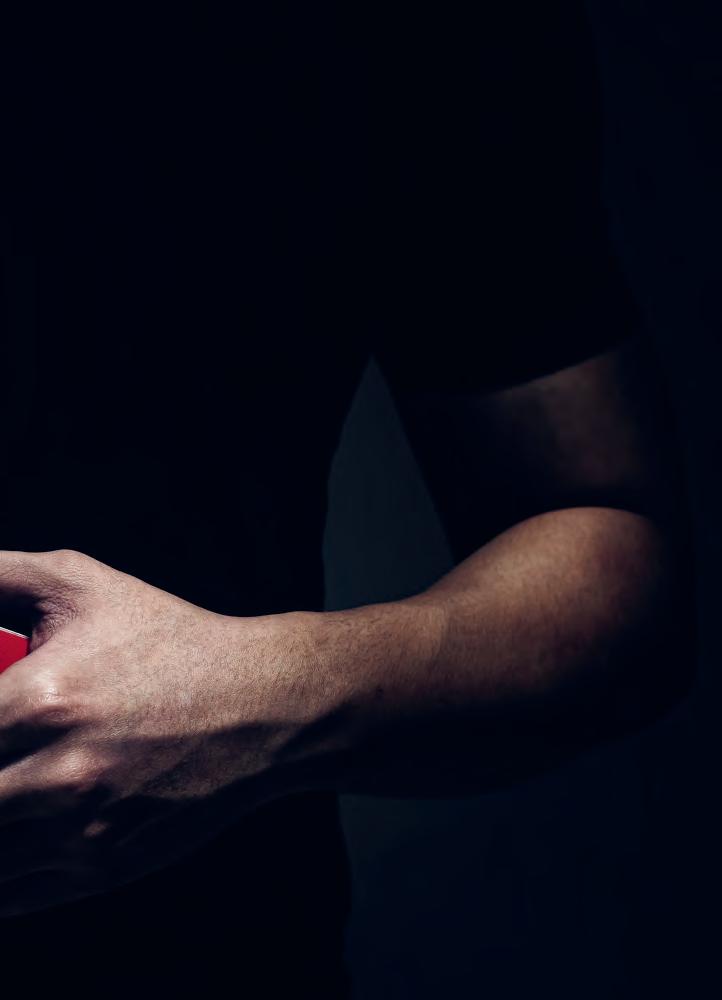
Yet, we’d never released anything because the truth is… when we actually tested the prototypes, we got bored with them really quickly.
As for why? The problem is
something we call “the 52 repeats”. You know how so many Cardistry decks have a back design on one side, and a simplified version of that same back design on the other side? And how they then duplicate this card 52 times to form a deck?


It’s a good idea in theory… but we believe there’s a good reason why its never caught on —
Shuffling a deck of 52 duplicates gets really boring, really quickly. I mean, would you buy a deck for Cardistry where every single card was the three of clubs?
And don’t get me wrong. I’m not saying this in judgement of other designers out there. We too thought it was a good idea.
the virts launch edition �� signed tuck case for the launch edition �� 33
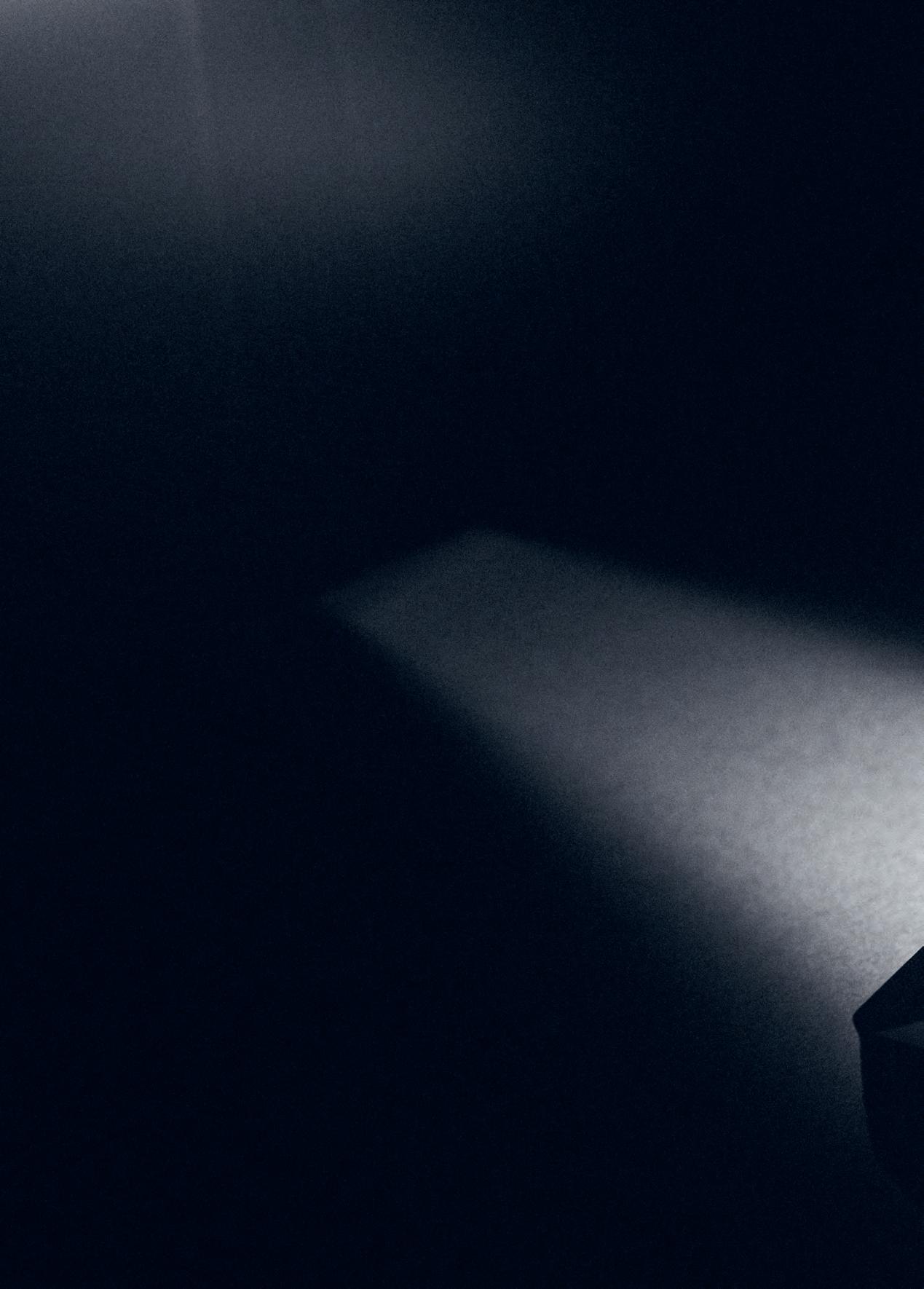
“
“
Huron Low 38 THE FLOURISH |
I guess we were foolish enough to believe that there could be a way to make it viable — that we could somehow grow Cardistry beyond its minute size.
Basically, the idea was to grow Cardistry by inviting an entirely new segment of people to this new category — people who would have never considered picking up a deck of cards otherwise.


And it was incredible, because almost every video we’d released during a campaign went viral and made millions of new people aware of Cardistry.
Yet… what’s the point of all the views if nobody picks up a deck?
And so, adoption was another challenge we had to solve.
Put another way… say you bring tons of people to the door. How do you now motivate them to take their first step in?
And one day in 2015 — after trying to make things work for almost 3 years — we thought,
“Well, what if we just gave our decks away for free? Say the first deck anyone gets is our gift to them… and they can buy more if they want?”
The idea was to be willing to sacrifice profits up front and play the long game… by doing a godfather-like thing where we made someone an offer they couldn’t refuse.
Needless to say, the thought of that really scared us at first.
“What if people just take the free deck and leave?”
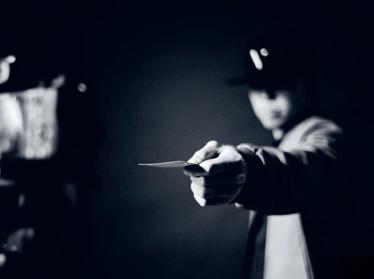
“What if our company just dies because we’re out of decks and no one actually buys anything?”
“What if people buy something, but our profits are so low and we die anyway?”
It took Jeremy some calculations and looking at our past deck sales to say something along the lines of,
“Well, our customers don’t usually just get one deck. Let’s hope the new people people buy in the same way. And if things really go bad… then we can end the campaign after awhile.”
And well, after a ton of debating and worrying… we decided to go with it.
As for the results? After our video Air Time (the campaign video for the SS15 Virtuoso deck) went viral in 2015, we decided to do exactly that — and we sold what we thought would take a year to sell… in a little over 9 hours.
We also made a very healthy profit, because it turned out that most people did love the deck and wanted more than just one. And this ended up creating a massive spike of growth in the Cardistry community.
So yeah, whenever we can, we do our best to give to the community. Because we get to introduce new people to the art, and we also get to say thanks to the people who have followed and supported our work.
moment captured from their “liquid paper” video from 2016
the virts have always pushed past the normal conventions of designing cards and have searched to create decks that elevate cardistry ◼ ◼ ◼ 39 THE FLOURISH |
thep1 deck featured several prismson the back design which add an extra layer of beauty to flourishes.
On a side note, one of the most rewarding things that have come out of this… is that that I’ve been contacted by people over the past few years who have shared stories that go something like,
“Hey, I was just a kid back in 2015. And where I’m from… I never had the money to afford your decks. But you guys giving your decks away for free allowed me to own one, and that meant a lot to me. And now that I just got my first pay check, I’d love to support you guys.”
I can’t tell you how much messages like that mean to me.
And while growing Cardistry and a business is one challenge… another challenge is working together with friends you grew up with.
Some of us started working together when we were teens. And it’s been over a decade of growing, fighting, and reconciling. It’s both super fulfilling and frustrating.

I mean, I know how people say not to work with your friends… but I personally can’t imagine not working with my friends.
After all, if you genuinely do align with the people you work with… why would they not be your friends? And even if you stop working with your friends, it can be done gracefully, and everyone can certainly remain friends.
The biggest lesson of all in all this though… is that the challenges don’t ever go away.
They change into different ones as you grow. And you learn to deal with them
in better ways as you get stronger (and hopefully, wiser).
But yeah, as long as we’re here on Earth, the challenges are here to stay.
And I certainly have a lot left to learn, and a long way to grow.
Hype us up and tell us what are some of the projects theVirts are currently working on. Do you have a new video in the works? Is there a new deck in the making?
Hah, the most I can share right now is that we’re expanding the new Virtuoso Moments series with more flavors.
At the end of your “RISE” BTS Featurette, Daren said “How are we going to top this video?”. I feel like this is a question each cardistry brand out there has asked themselves. How have you guys managed to top each previous video and always bring something fresh?
I’m honored that you feel that way! I wouldn’t say that we’ve managed to top each previous video though — different people always seem to like different Virt videos.
The only way I can say we’ve “topped” our previous work… is that we’re gradually getting better at turning what we envision into reality. Put another way, the gap between what we imagine and what actually gets produced is narrowing over time.
As for how we bring something fresh each time, I suppose it goes back to our creative process I shared earlier; which centers around extracting what inspires us and putting that into a common vision.
And because what we’re inspired by always collides with our personal interests — which grow and change over time — I guess it ends up as something fresh.
Finally, as someone who admires filmmaking, I have a secret wish list of things I hope to be able to play with or try. And as our skills improve and our opportunities (and budgets) expand, we seize the opportunity to do the things we’ve long wanted to experiment with.
Continued on page 62, where we talk with Huron about his personal journey as a cardist.
◼ 40 THE FLOURISH |
daren and huron relaxing in berlin
◼
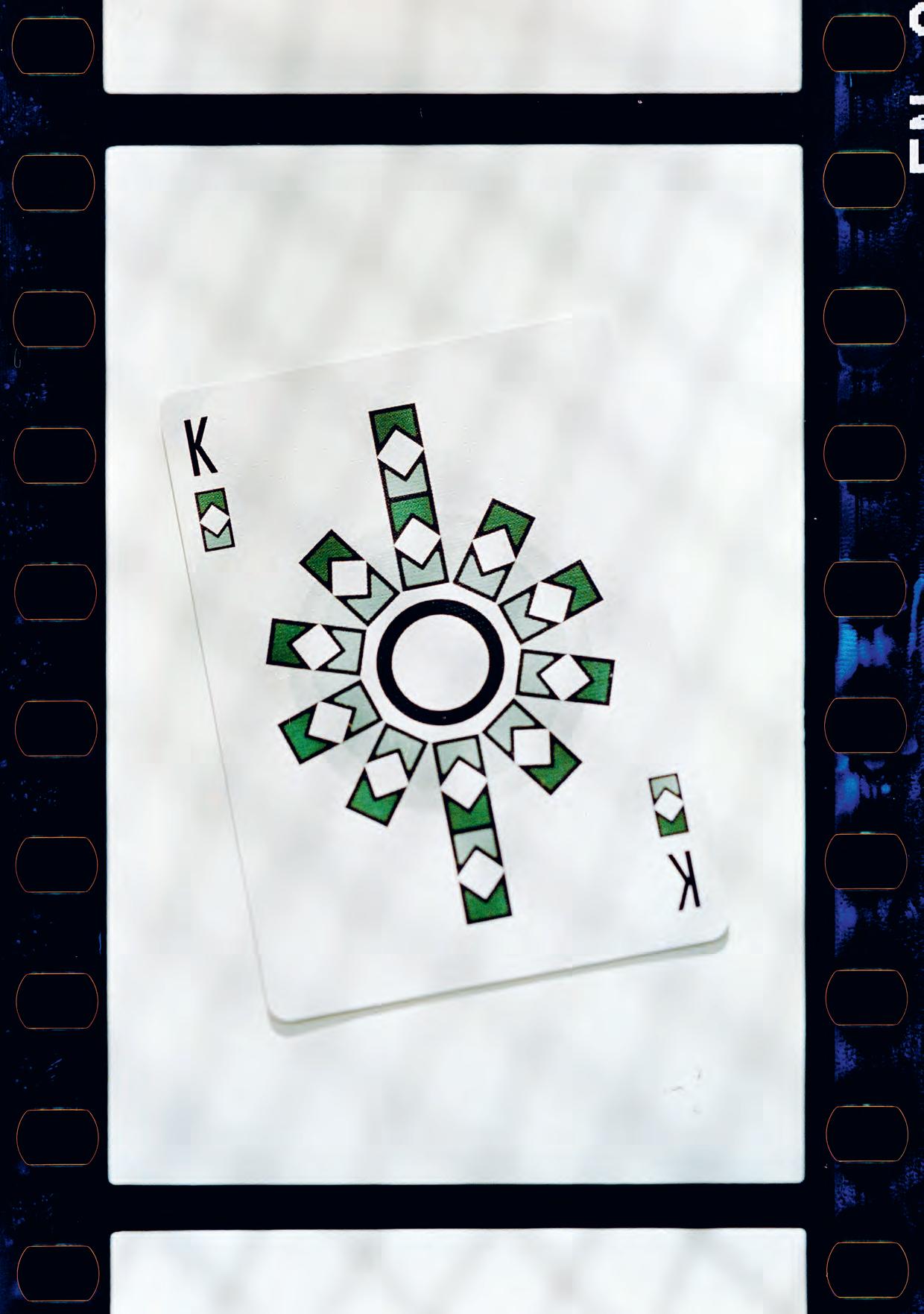
THE VIRTS
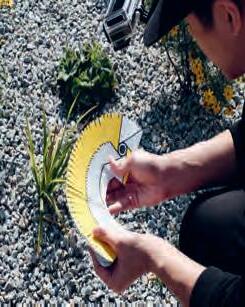










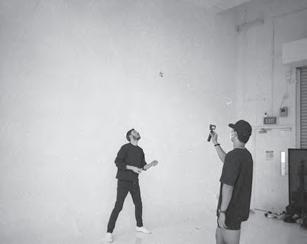

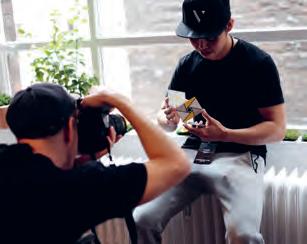

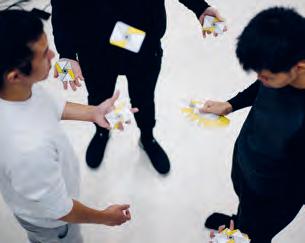
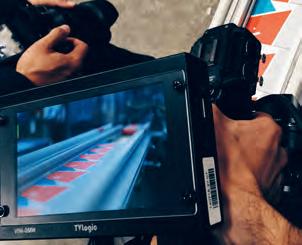
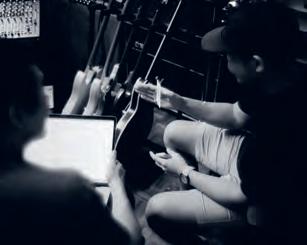
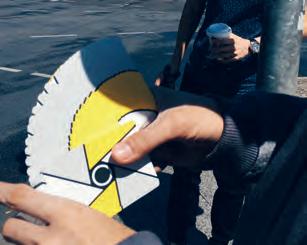
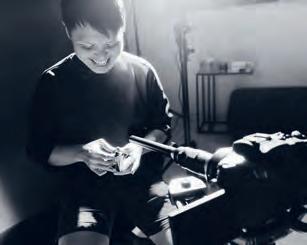

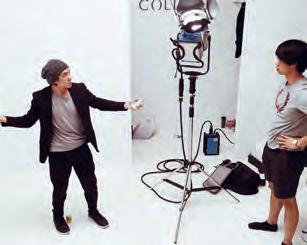
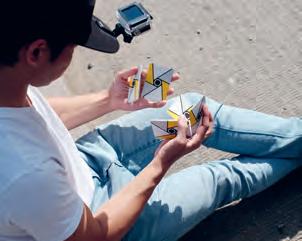

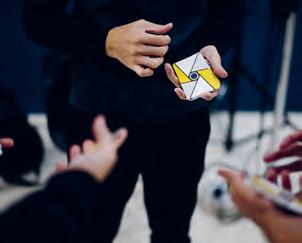
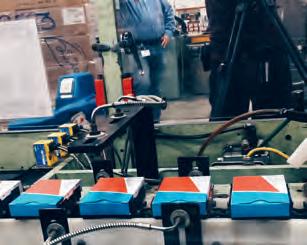

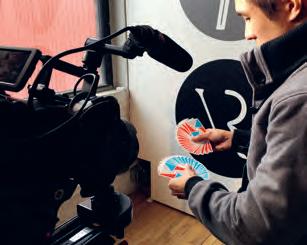
VIRTS


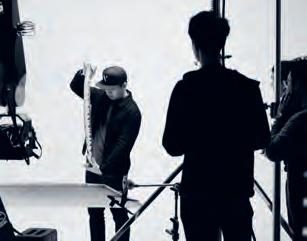
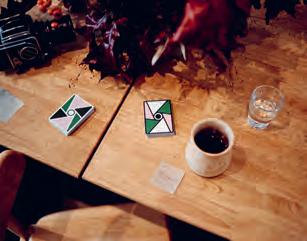

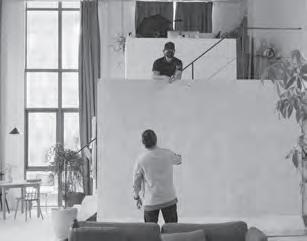



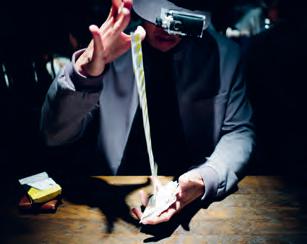

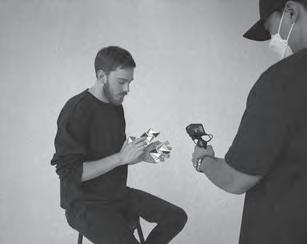

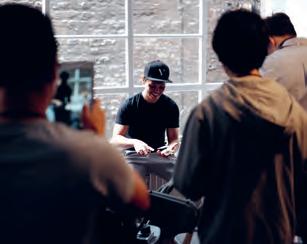




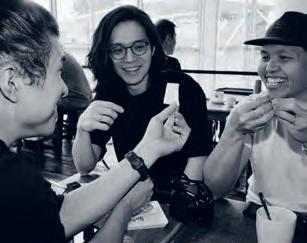



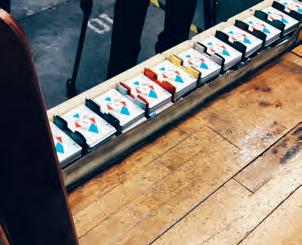
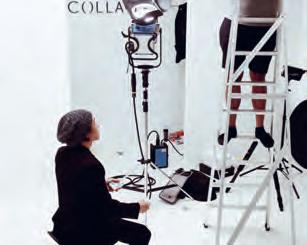

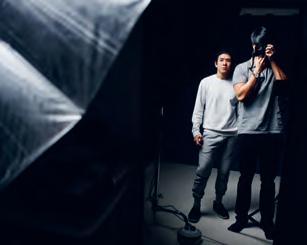
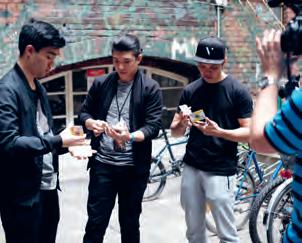
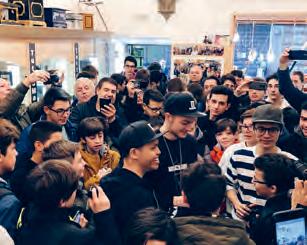
INTERVIEWS

How I Create
By Joe Feldpausch
Joe made himself known in the community through his stylish performances and great use of slow-motion in his videos. It was due to this that we reached out to him in an attempt to find out more about his creative process in front and behind the camera.
My name is Joe Feldpausch. I’m a playing card artist and designer from the Mitten State (a state in the U.S. shaped like a mitten, hence… well, you get it).
My fascination with cards started when I found my dad’s dusty magic books under my bed. I began learning card magic until I stumbled upon cardistry in 2013; the skillful nature and visual spectacle instantly hooked me. Cardistry introduced me to graphic design, and I fell in love with developing intentional design solutions through reason-based form and shape.
For this article, I’d like to quickly walk through some key topics and stepping points I took when pursuing this art form. These topics are: creating moves, filming for social media, and designing a deck of cards. I’ll
provide insight into how I have approached (and still approach) these topics and perhaps offer some valuable information you could apply to your journey with cardistry.
To start, let’s talk about creating a move. Making moves was not a priority when I began shuffling cards. I was more interested in getting the fundamentals down, aka learning moves other people had created. Once I gained some confidence, I became more interested in seeing what I could contribute to the card community. I got to the point where I was creating and filming a new move, concept, or idea every week (of course, not every idea was revolutionary).
I focused on utilizing one strong mechanic or moment with clear intent when making these moves. This focus is something I still carry with me today. I always felt that movements composed of one powerful visual with clear intentionality are very effective and can become timeless (much like my move, Waterbend). What I am trying to do with the cards is clear; everything seems to be done with an obvious purpose.
These types of simple and powerful moves hold a lot of visual punch and are typically well-received by laypeople (this is also what makes them so great for social media).
Speaking of social media, let’s talk about filming for it. How I approach filming our art form for social media has stayed relatively consistent for the past five years or so. Before getting the cards in front of a camera, I ensure I can perform the move cleanly. How you execute a movement with confidence and flow can alter how it is received by your audience drastically.
To ensure I am at this point, I often do “practice filming sessions.” I use these sessions to pinpoint how I’d like to frame my shot, where I want my lighting, and if I can perform the move as smoothly as I’d like. Making the cards the focal point directs my decision-making (seems obvious, right?).
I ensure the playing cards are well-lit, the background elements are not distracting, and I find an angle in which my hands do not impede the move. By remembering these
things, I help draw all the attention to the cards. The movements are presented and seen to their fullest potential.
The last topic I’d like to discuss is creating a deck of cards. While this topic is currently pretty novel to me, it is what I genuinely love doing, a harmonious blend between my passion for cardistry and design.

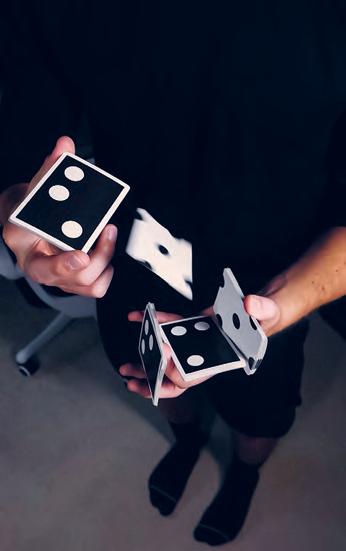
During schooling, I gained an appreciation for a minimalist mindset and crafting intentional compositions which held meaning and purpose with every design decision. Naturally, these ideas worked their way into the 3DOTDECK (the first deck I created).
With these cards, I focused on an original and bold design characterized by powerful visual concepts and intentionality. Of course, not every deck needs to follow these ideas (this is how I approach designing a deck). I advise others who want to create cards to craft something they love. It seems obvious, but being passionate about the design is so important; it will make everything easier. You should also be passionate about why you’re doing it and make sure you love the process. Creating a deck of cards is a massive commitment (and a risky one at that). But, if you love the process and believe your deck deserves a place in the playing card community, it will be the most fulfilling pursuit.
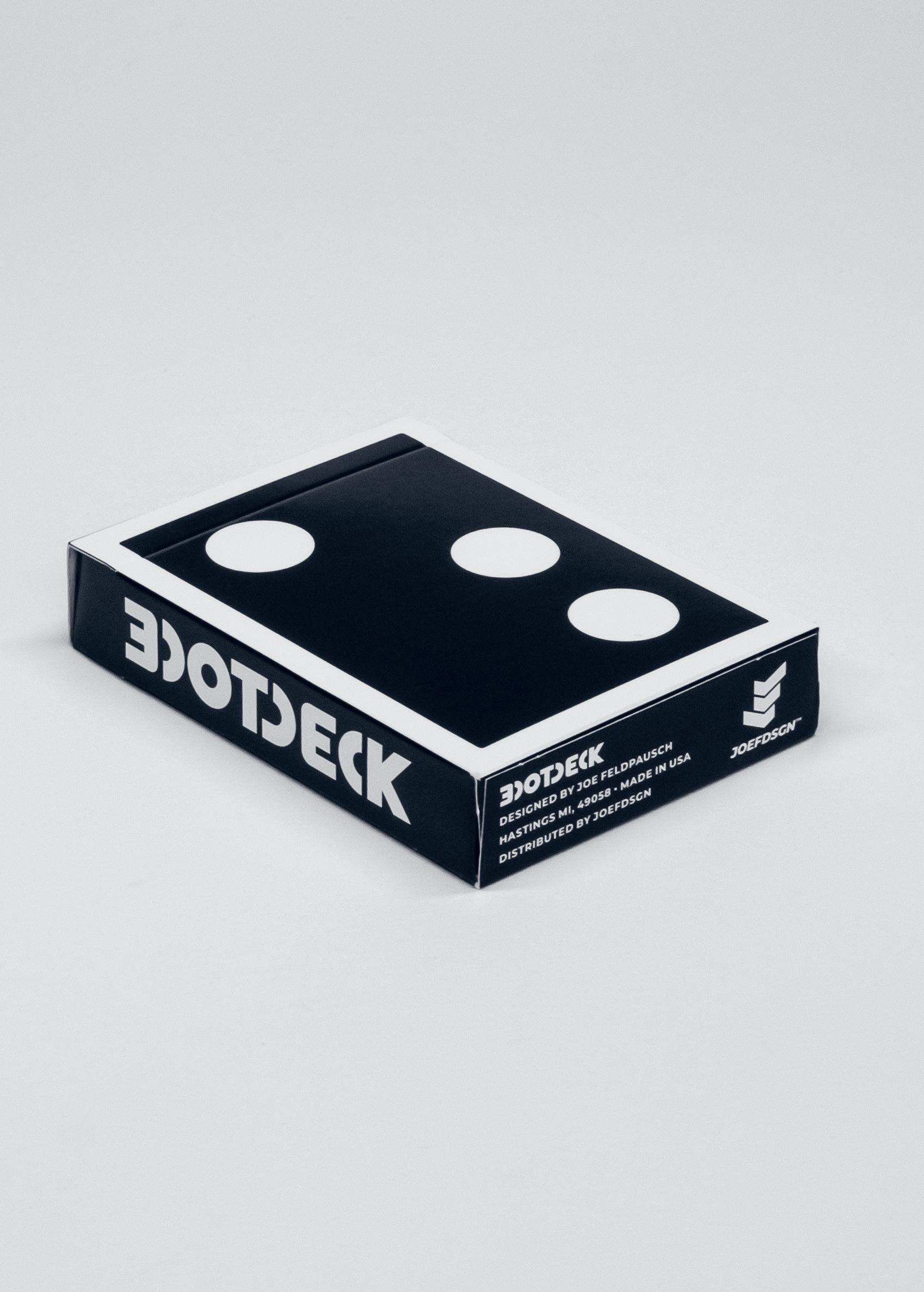
joe performing “waterbend”. due to it’s aesthetics, the move has been learned by many around the world. ◼ ◼ 47 THE FLOURISH | INTERVIEWS: JOE FELDPAUSCH
joe frames his shots so that the focus lands on the cards and flourish.
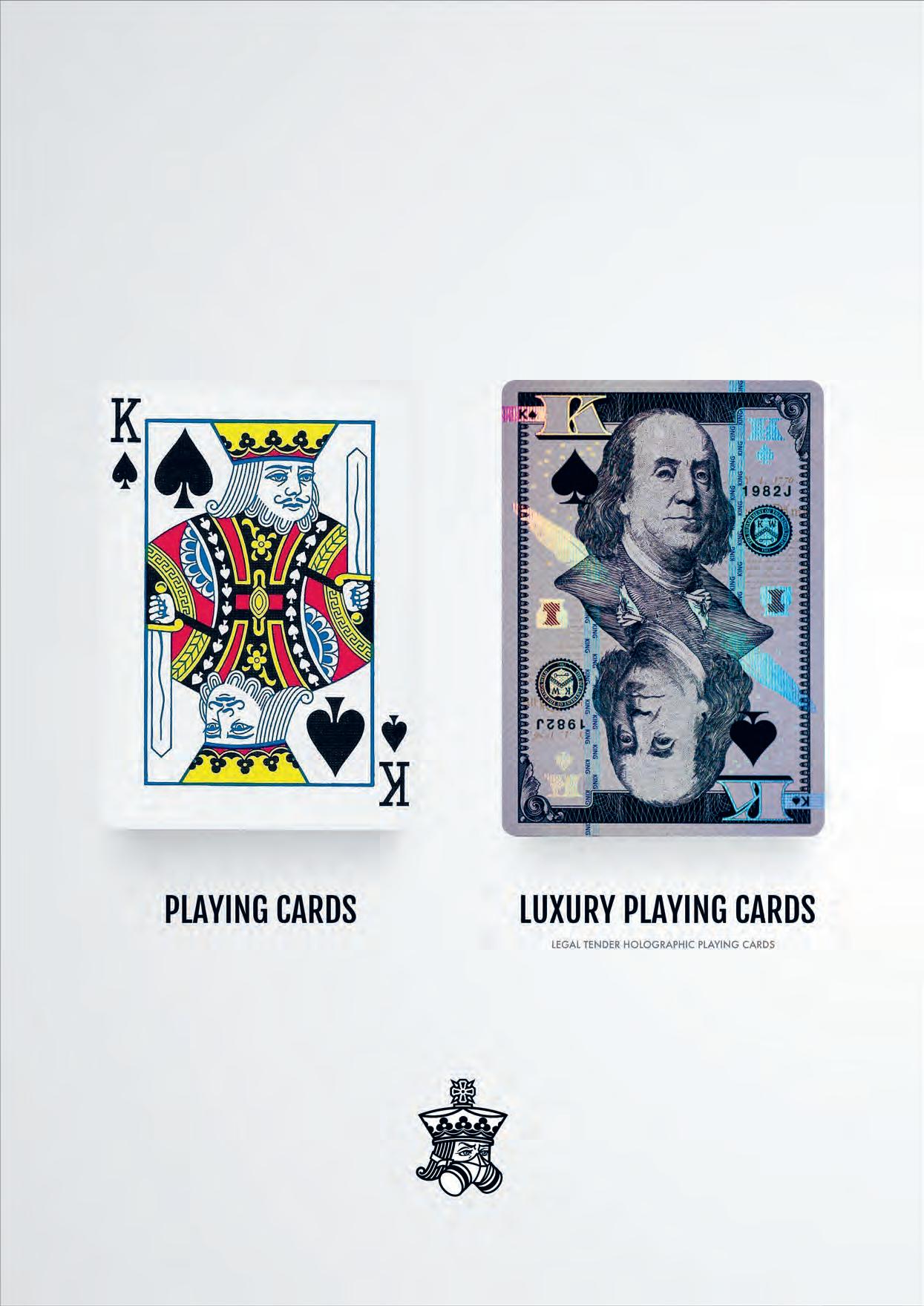
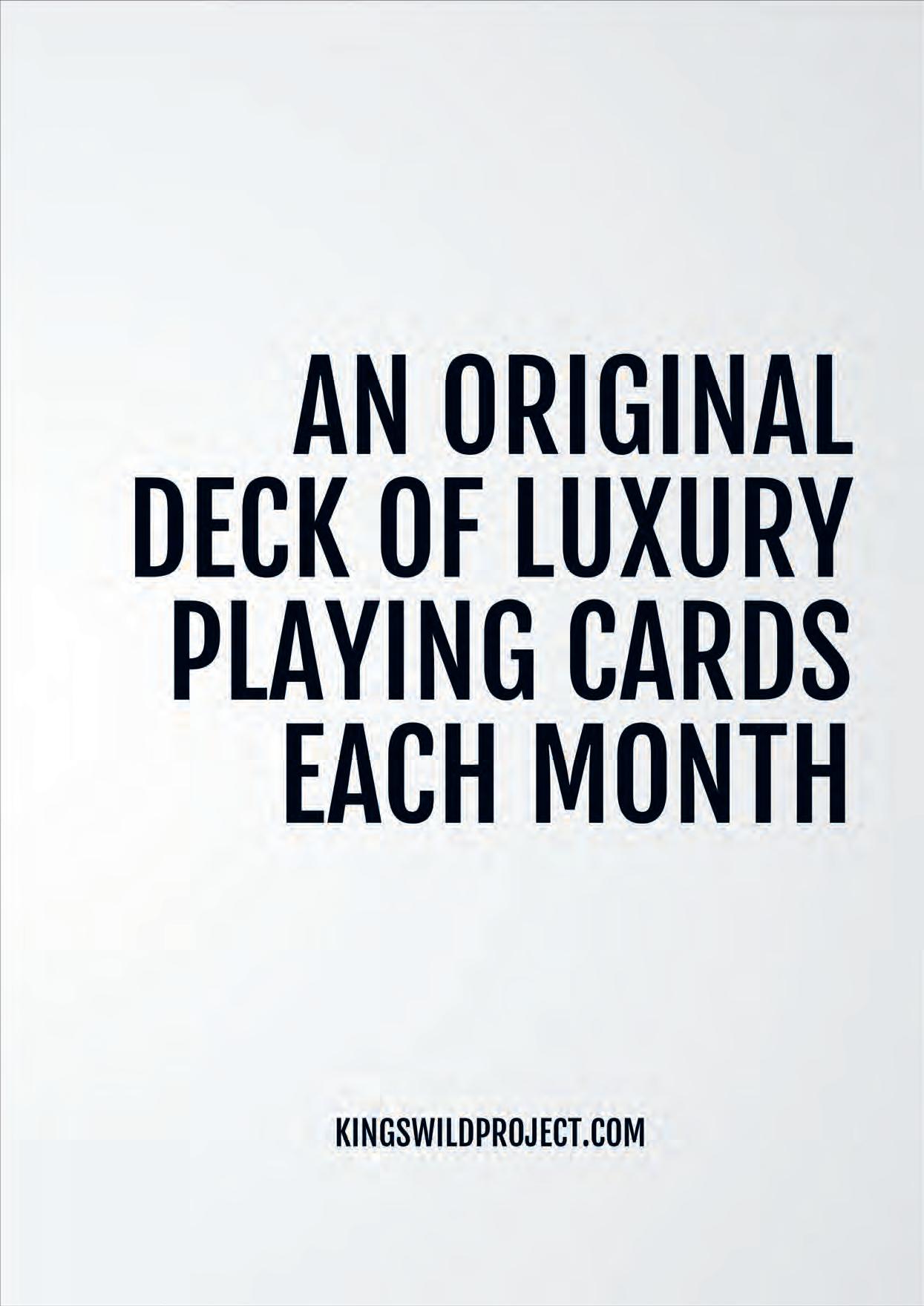
INTERVIEWS
 With Matthew Samuel The Unfolding
With Matthew Samuel The Unfolding
Samuel is a very creative cardist from Melbourne that made everyone’s radar after his video “Out of Bonds” was released. We wanted to find out more about Samuel’s way of creating unique flourishes, so we asked him if he would be willing to sit down and answer some more intricate questions (together with some simple ones as well).
Q: Tell me about how you started cardistry. I might be a bit of an outlier - I started out doing cardstry rather than magic. In high school I had a friend say I sucked at shuffling when playing some card game. So, out of spite, I learned some basic flourishes from YouTube like the Riffle Shuffle and Charlier cut (and admittedly, a few false cuts to cheat).
That’s all I thought there was to “card flourishes” at that point and I moved on to magic since that seemed more interesting.
The tipping point, when I decided I wanted to focus entirely on cardistry and not magic was when the blue Fontaine trailer came out. Seeing real cardists like the Danes, Chase and Zach preforming cardistry that wasn’t just false cuts was insane to 15-year-old me. It really broadened my horizon. From that point, I wanted to be as cool as the people featured in that video.
I think the main thing that attracted me to the hobby was that my enjoyment stemmed out of my own self-improvement and creative output. Whereas with magic my enjoyment was more tied with preforming well in front of others. Outside of cards, I’m a big tech dork, I love learning and playing around with software and electronics.
Thanks! The move (Carpal Tunnel) came about after seeing Griff Wyse’s video ‘Woodwork’. He had a move in there where he rested a packet on the back of his thumb, that piqued my interest. I saw a prime opportunity for an interlock, which up until this point, I hadn’t made before (mostly out of fear).
From there it was a pretty straight forward process of finding an opener that was distinct from Griff’s cut and finding interactions that justified the absurd grip. I ended up settling into a simple repeating mechanic of threading a packet through the “tunnel” that was created in the previous beat.
The use of the watch came more out of necessity than a choice. My thumbs just couldn’t handle being overextended for long periods of time to support that single card. Honestly, I think the watch is a bit too distracting to some people and I would have gone without it if I could.
Q: The video was your first collaboration with Anyone. I first found out about you from Noel when he showed me some videos you sent him in preparation for your Anyone collab. This was back in the day when Noel was with them. Tell me, how was the experience of filming with the gang?
Filming ‘Out of Bounds’ was both incredibly exciting and a daunting experience. This was my first proper performance video outside of a small competition I participated in 2017 and I was going to be filmed by the Anyone team no less.
the 2015 Cardistry Con talks. At that point, I was desperate to know the “secret” to making my own flourishes, so I watched those talks ten times over, soaking up as much as I could. In terms of style, I really wanted to be a middle ground between Chase and Nikolaj, which you can kind of see in my pre-2018 material. What caused my style to noticeably evolve was when the BCA tinychat room was set up at the end of 2017.
I’ve only ever had one idea that integrates both tech and cards, but usually I keep the two pretty separate so that I can focus on one when I feel burned out on the other.
Q: There’s this move of yours from “Out of Bounds” which I find very beautiful: it uses a special grip, a single card, incorporates the use of an external object (the watch) and sports an isolation that just kills - take me on a creative trip through the conception of this move. How did you create it?
Needless to say, I was super nervous. I even remember practicing all my moves with brand new decks out of fear that Tobias would hand me a new deck and expect me to just go.
After meeting them though a lot of my fear disappeared. All three are incredibly chill, warm people and were super patient with me trying to nail my moves - couldn’t say anything negative about the experience.
Q: What was the most difficult flourish to film?
The most difficult flourish was definitely the One Handed Werm at the end. The condition of the deck as well as my lack of practice meant that it took hours to get a half decent take. And even then, in the final take my right hand reflexively tried to catch the cards, which I thought were going to fall. Because of that we had to do cover it up with a split screen effect. I do like how it ended up looking in the end though.
Q: You’ve also collaborated with BCA before on a tutorial move. Quite a beautiful one. Elegant and simple. Your moves are very addictive to watch. They seem to keep folding and unfolding, twisting and bending - what has your creative journey as a cardist been like? And when was the first time you realised you could create cardistry?
My approach to creating has almost entirely been informed by
For the first time ever, I was able to talk to cardists that were just as passionate as I was. They introduced me to mechanics and concepts I would never have thought of and I’m super grateful to Patrick for creating that space. From that point, my process has been me shamelessly stealing from everyone, not just trying to emulate my idols.
My first move was a real piece of shit haha. It was a complete copy of Chase’s move, ‘Bowtie’, with some small changes that made it much worse.
I think I sucked for a long time, until I slowed down and tried learning more than creating. I think the first time that I realised I could do this (create) was pretty late. It was in 2018 when I had finished ‘McAvoy’.
Four packet moves were really the end goal for me and when I had finally achieved that - and made a move that I’m still in love with todayit proved that I can be like my cardistry idols.
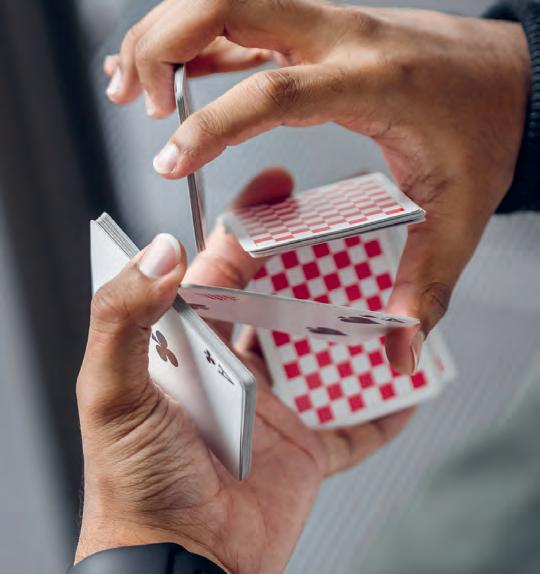
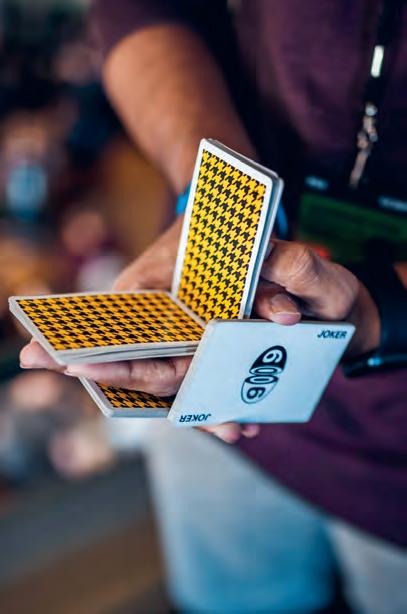
Q: What was the most challenging flourish you’ve created? It might just be recency bias, but the most challenging flourish to make so far has been the bendy move at the end of “Bluff”.
I had the base idea of tossing a packet from one bent packet to another, but I had no frame of reference of where to start or who to steal from. It felt a bit like being in uncharted waters, which was very exciting but also very scary. I was definitely worried that people wouldn’t “get” the move.
55 55 THE FLOURISH |
“
“I think the main thing that attracted to the hobby was that my enjoyment stemmed out of my own self-improvement and creative output.
Matthew Samuel
flourish: gator cards: anyone houndstooth ��
�� INTERVIEWS: MATTHEW SAMUEL
flourish: baton pass cards: anyone red checkerboard
INTERVIEWS
My Journey
By Michael Warneke
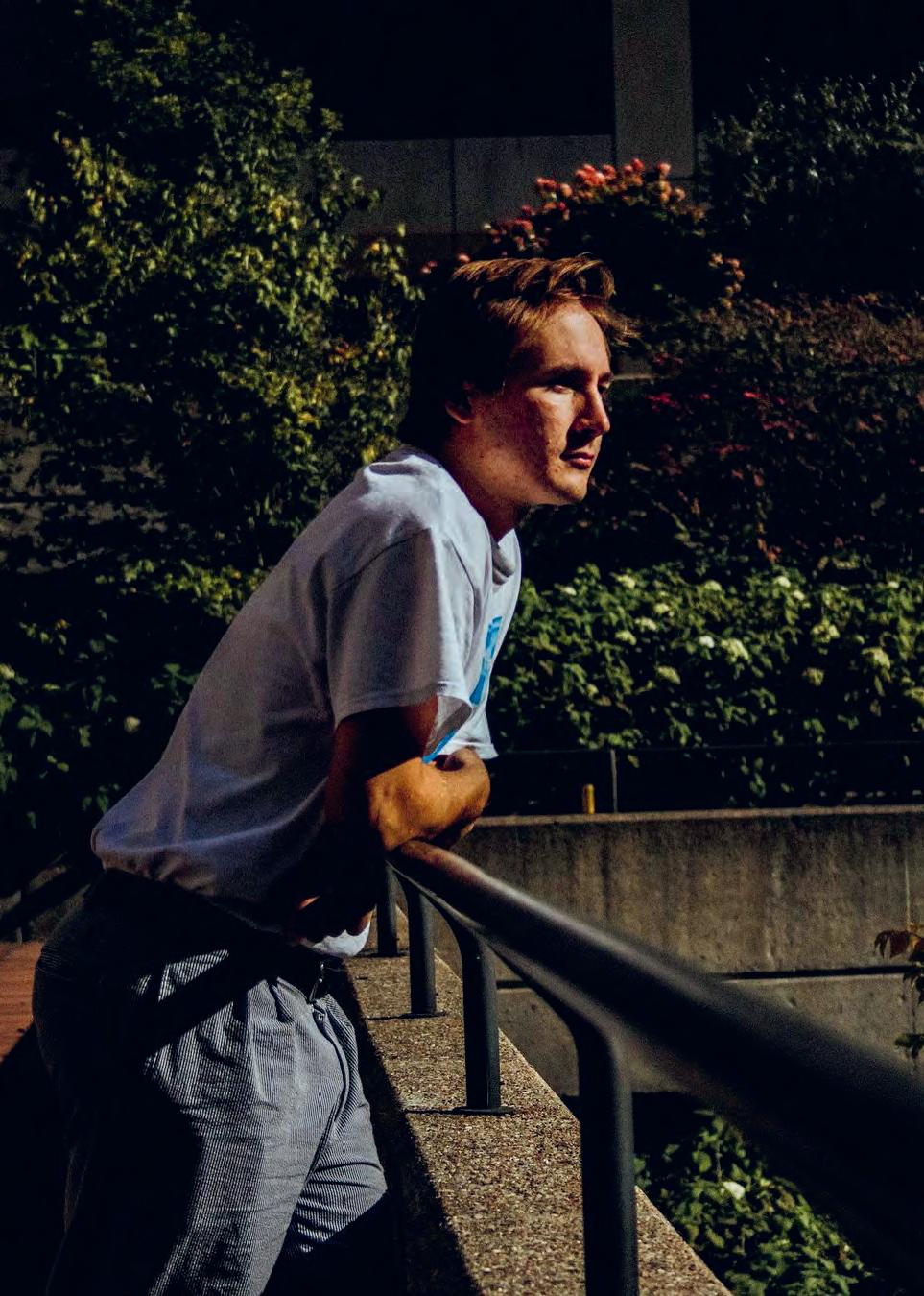
MY JOURNEY IN ART
I’m not sure I’ve ever been a good artist, nor am I sure that I am even a good one now, but I am very grateful that others have assigned me that status and allowed me to get to where I am today in my career.
I had always wanted to make a career out of art, but never really knew where that would lead me or how successful I would actually be. I cannot express how grateful I am to cardistry and the people I have met through it, along with all the other incredible artists I have met along the way. I would not be in the position I am creating art full time for a living without the incredible communities I’ve been able to be a part of.
From 2019 to early 2022, I had been attending University trying to get a degree in Graphic Design. I transferred from a previous university because I was unhappy there and no longer wanted to continue with a CompSci degree. During my time at school I was constantly fighting little mental battles if what I was doing was really worth it, and if I could actually make a decent living off of art or design. I didn’t know anybody who had made a career as an artist and especially didn’t know how to get to where I wanted to go as an artist. My school’s design program was alright, but I knew there were a lot of pieces missing to becoming a successful designer/artist that they were failing to teach us. I wasn’t sure how to obtain these missing puzzle pieces but I continued through the motions of school anyways because hey, “You gotta get that degree!”.
Sometime in late 2020/early 2021, I decided to get back into doing 3D art. It was something I had been around for a very long time and I understood the basics very well, but I had never really finished any projects of significance because I would get very overwhelmed with the details of the piece and quit halfway.
I decided that I would start re-learning my 3D skills and actually complete projects without stopping halfway. I gave myself mini-projects that I would have to finish in one week and started to really quickly get back up to speed with things. In a relatively short period of time I saw some very real improvement. I continued this on and off until around 6 months went by and I actually got my first commission offer.
It was a music video for a friend and the pay was only around 300$, but I was ecstatic that someone would even consider paying me for the work I really loved to do. There was always a part of me that felt that even if I could make a living off of art, I would still have to concede a part of myself or a part of what I enjoy in order to actually create work for others. I worried that I would simply be used as a tool for creation rather than anyone actually respecting my ideas or style.
Getting this first job was a small but meaningful signal to me that some people actually do value my creative input and want me to put my heart into the work I make for them, and don’t just consider me a tool for getting something made.
As time went on my work got better, I met other 3D artists and directors, and I slowly started getting more work requests.
Eventually there came a tipping point around February of 2022, where I hit the end of my rope with university. I had been getting quite a bit of 3D work and was working on a music video project for Yung Bae. The video was a very

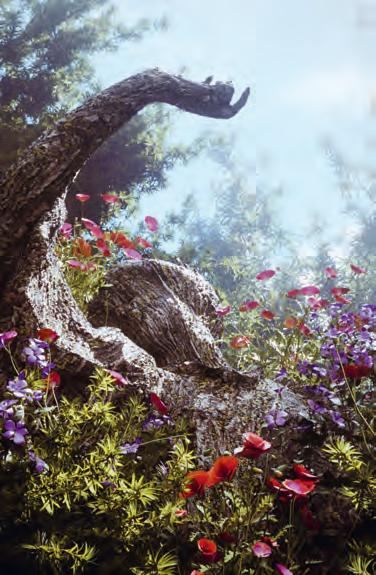
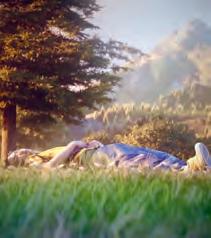
(SO FAR, I GUESS)
big job and was also super last minute, which caused a lot of my schoolwork to start falling behind. Even though I had Sony Records directly emailing my teachers about my workload and giving me extensions, none of my professors viewed it as a valid reason.
At this point, I felt torn between school, my sanity, and a career that I truly loved and was actually succeeding in. I knew I valued my sanity and my career more than a degree that would have a marginal chance in improving my job prospects, and decided to have a conversation with my parents about leaving school. Luckily, they understood where I was coming from and were much more understanding than I had anticipated. I then stopped attending university.
Since then I have been fortunate enough to work for clients like Keshi, Ride Snowboards, Hard Jewelry, and many more. There are still months where I wish I had more work, but I am more than happy to trade a bit of income for the knowledge that I truly know what I want to do for the rest of my life.
During all of these years, I stayed very dedicated to cardistry and becoming a better cardist. Through cardistry I was able to give myself a small taste of the possibilities of creating real art projects with a real potential for value.
Frontier (@whyfrontier) was one of those projects.
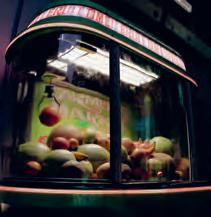
59 59 THE FLOURISH |
“aqueduct dreams”
“naptime” “the last dance” ◼ ◼ ◼ ◼
“can’t quite seem to get it”
INTERVIEWS: MICHAEL WARNEKE

With Huron Low A Closer Look
INTERVIEWS
Q: You have seen the cardistry scene change and evolve ever since CheatersCheater and Decknique all the way up to what it is today. In what ways do you feel like cardistry has changed? Both positively and negatively. Man, that was a hit of nostalgia. For anyone who doesn’t know… CheatersCheater was YouTube (for magicians and cardists) before YouTube existed. Those were the days of video downloads, because streaming wasn’t even a thing.
In terms of how Cardistry has changed…

Firstly, it’s really cool that there are now many Cardistry teams, brands, and videos today. It’s really grown into something that now stands on its own two feet.
I also love how there are just so many more people in the scene today, and how ridiculously skilled and creative so many of them are.
That said, there are downsides to this as well.
Despite the creativity… there seems to be less polish in the moves people present, and a lot more churning. People seem to “throw away” new moves almost as quickly as they create them.
I’ve chatted with some people about it, and it seems to always point back to the desire to stay constantly engaging on social media.
It’s like, on one hand, there’s a push and drive to constantly create new material.

Yet on the other hand… a lot of good ideas never get honed into great ideas.
And I guess it’s a bit of a pity because it feels like a lot of people quickly move on
from their unpolished gems. And I’d love to have seen what they could have become — because I wish I came up with some of those moves!
This churn has also reached the products that are created and released.
My impression is that certain brands have hurt the goodwill they initially built up with their customers. And instead of continuing to offer what their customers once knew them for, they’re just rapidly throwing things at the wall (sometimes in bulk!), thinking that customers will mindlessly lap up anything they release forever.
It might have worked for awhile… but I’m also starting to see cracks that reveal that customers aren’t having it anymore.
And to be clear, I’m not saying that less is better. I’m all for giving your people more of what they resonate with — just not at the expense of what your brand stands for.
On another note…
Cardistry has also become a lot larger, and naturally has become more divided. For example, there’s a thriving Cardistry community in China with brilliant people that hardly anyone knows about. Yet, there seems to be an invisible wall between the East and the West communities of Cardistry.
I’m grateful that Virt gets to connect with both worlds, but it’d be interesting to bring everyone together a bit more and to see what comes of it.
Finally, the seemingly endless war between “whether card magic or Cardistry is better” is finally a non-issue now.
It used to always be this, “People only do
meaningless Cardistry because they suck at magic” and vice versa. And to me, they’re strange statements to make.
It’s like saying that dancers suck because they can’t act, and that actors suck because they can’t dance.
I mean, a dancer and actor might share the same stage, but the nature of their crafts are just fundamentally different. Whichever you think is “better” just depends on what you’re personally drawn to.
And if magician and cardists have the opportunity to borrow from each other and create something potentially greater than the sum of their parts, then why not?
Yet, because Cardistry originated as this “bastard child subset” of card magic, things always got muddled together in really unhelpful ways.
On that note, helping Cardistry to be healthily distinct from magic was part of our initial mission.
And seeing where Cardistry is today, it’s almost absurd to think that this was something people ever fought over.
I’m quite happy about that.
Q: Tell me a bit about your journey as a cardist and magician. Not many cardists know, but you were a published magician before being a successful cardist. I even remember learning your TnR card effects from your “Four” DvD.
I’ve loved magic since I was a kid (like 5 or 6 years old) — I blame it on my brother who started showing me tricks from the magic
63 63 THE FLOURISH |
“
“Despite the creativity, there seems to be less polish in the moves people present, and a lot more churning. People seem to “throw away” new moves almost as quickly as they create them.
Huron Low
�� promotional image for the ss16 deck ◼
◼ INTERVIEWS: HURON LOW
behind the scenes of “air time”
LUKE WADEY: A WAY WITH WORDS

DESIGNER HIGHLIGHT
MASTER OF CARDS
LONDON, UK 32 70 DECKS �� �� ��
You may not know me, and that’s ok, so let me introduce myself – hey, I’m Luke Wadey. A keen skier, adrenaline seeker, and obsessed with wearing Fred Perry; I’ve been a graphic designer by trade for just over a decade - everything packaging to real estate, branding to animation, brochures to artwork. The past six years I have been designing cards in my spare time too - I’m a small name in the grand scheme of things, but just enjoy the break from reality I get when I create for our palms. I’m no cardist, nor a magician, just a mere spectator that enjoys watching the movement, when combined with expressive design.
Based in and around London, I have been fortunate to work with some huge brands in my day job, and have always been within touching distance of the cultural inspiration that the capital offers, whilst within playing cards I am lucky enough to have worked with household names such as, but not limited to, Murphys Magic, JP Games Ltd and the Buck twins. It’s fantastic to see CC come to London, with all the unique personalities and talents that come with it!
To date, I have designed and printed over 70 different decks including around 20 successful Kickstarter campaigns and over 50,000 decks printed, ranging from one-of-a-kind prints on Patreon, to traditional 2500 print runs. I have a niche style that many are unaware of, some aren’t keen on, but I am very lucky to share my creations with a handful of like-minded people that find happiness in them too. Some designs are more traditional, others less so.
I’ve won awards through United Cardists and Kardify, been featured in the German design magazine PAGE and have a strong focus on customer care and community, not just the design and production. I do not try to design for the masses, nor do I proclaim to be totally unique - I just enjoying creating cards I am passionate about, making connections and friendships with people in the industry along the way, and hoping to continue this journey.

My design style tends to originate from the founding graphic design principles -Swiss Design and Bauhaus - with a focus on typography and pattern work as opposed to traditional illustration - less is more. I believe that affective graphic design creates a connection between the creator and the viewer - we establish an emotional connection through the use of font, colour and composition. When someone looks at our work, we are standing next to them, telling them how to digest the information and how to feel about it. It’s no different with playing cards, both in how they look, and how they are used.
It’s an honour to be included in this publication, so let’s take a closer look at some of my collections.
>>
76 THE FLOURISH |
picture features the third deck in the mono series.
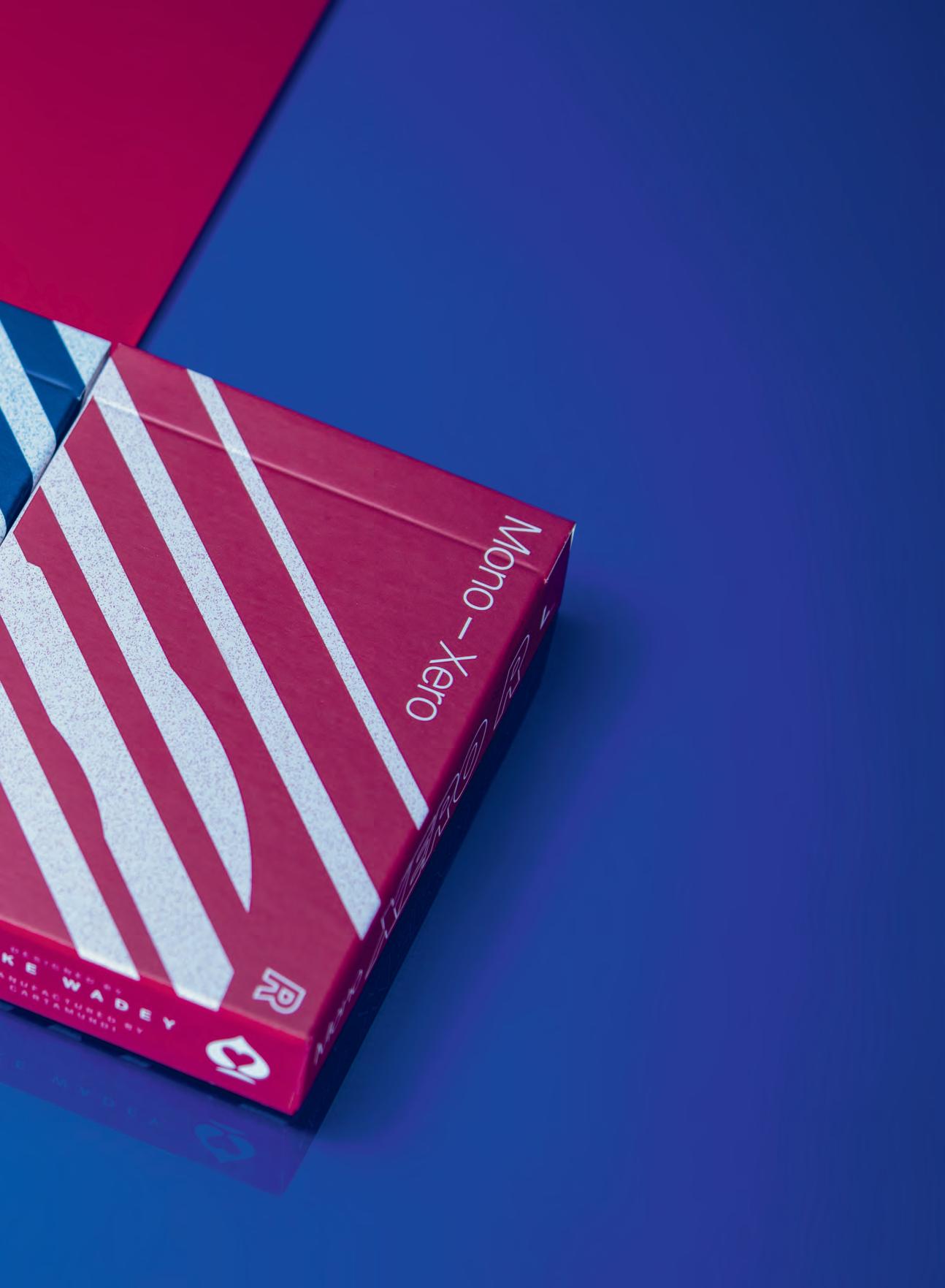
77 THE FLOURISH | ��
WORRY BRICKS THEMAKINGOF with
WestonHamilton
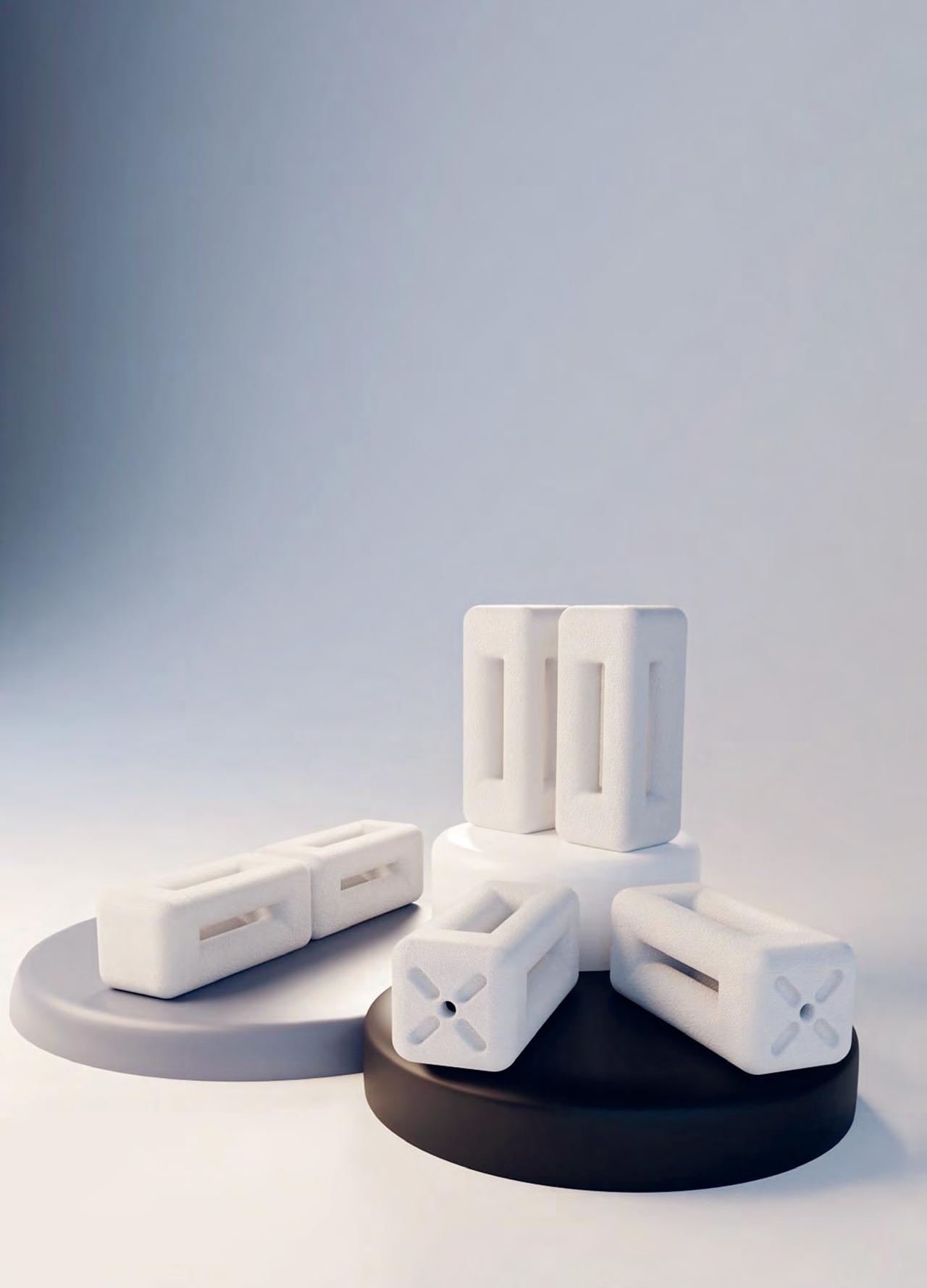
86 THE FLOURISH |
MY JOURNEY

...with Worry Bricks began in early 2017. At the time, I was doing promotional work for other toy companies and still getting my bearings with cardistry. I created this product with the intention of having a tool to build finger strength that I could carry in my pocket.
I believe that my interests in cardistry and other skill toys helped develop Worry Bricks from this utilitarian tool to a more versatile toy that could be used in creative and expressive ways.
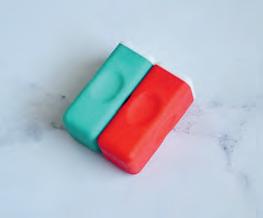
After some initial prospects of licensing the product to other companies fell through, I put this toy on the shelf for several years.
I had just begun college and was struggling to find my purpose. My products during these years were as numerous as they were forgettable, as I was having trouble concentrating my focus and commitment on any particular avenue.
It wasn’t until 2021 that I gave anything a real shot at success.
I had a belief in Worry Bricks that I had never felt with any of my ideas before. The more I showed the toy, the more messages I would receive about it, the more my confidence would grow. With a tremendous amount of momentum and a lot of luck, the first preorder I organized for Worry Bricks sold out in the first hour of its release.


I think about that night often. The confirmation and validation that I felt in that moment was incredible; the result of years of persistence, prototyping, and wrestling with self-doubt. That January, I was able to quit my restaurant job and start selling my toys full time.
Riding that momentum, the social media pages for Worry Bricks began to fly off the handle, particularly on TikTok. While I have never had any affinity for the platform and its practices, TikTok’s part in the development of this company cannot be omitted. In January, what would become my most popular product, “Sliders”, reached nearly 10 million views over the course of about two weeks. With the help of all the new faces, the sliders preorder garnered nearly $30k that weekend, fully funding a set of injection molds for the new models and marking a significant milestone for any company in the toy industry, particularly one only five months old.

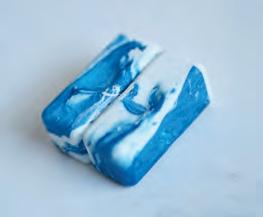
In that same Spring, I was very graciously invited to come sell my toys at the Komorebi pop-up in New York City. I was met with a warm welcome and made lots of good memories. It helped me understand and reinforce the connection I had between the cardistry community and the community I was building.
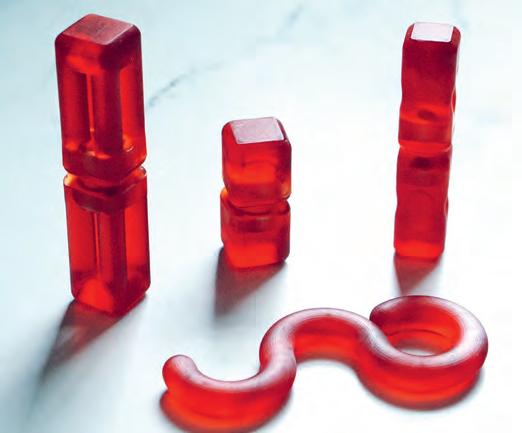
ruby expansion how the bricks are packaged and shipped
three different color models christmas edition bricks dipped bricks
TOY HIGHLIGHT
�� �� �� �� ��
THE J2 MODEL ��
: WORRY BRICKS
LEARN THE MOVES >>

CARDIST HIGHLIGHT NIKITA YATSIK
IVANOVO, RU 21 FT CHAMP 2021 �� �� ��
Nikita has proven on numerous occasions that he is a cardist of infinite creativity. The most iconic moment was during the Fontaine Trials Finals in 2021 when he put out a video with so many bangers in it that it looked as if he had been holding back the entire championship. We could describe Nikita’s cardistry as magical in the sense that each flourish he puts out tends to surprise you with the direction in which it ends up going. On top of this, many of his cuts require a high degree of skill in order to pull off, as packets seem to split in all directions, form interesting new shapes and ultimately merge together to form the deck once again.
We contacted Nikita to see if he would be willing to teach some of his moves in the magazine. Once he agreed, we were excited to see which moves he would decide to include. After chosing from a bunch he sent over, we decided on 5 of them, each uniqe in it’s own way. If you’ve seen his videos then you might have seen some of these in action. Well, this is your chance to learn them as well! While Nikita’s moves can be a challenge to master, learning them can open new avenues in your ability to manipulate the pasteboards.
So, without further ado, we present to you the cardistry of Nikita Yatsik, one of Russia’s most creative flourishers and definitely one of the top 10 most creative cardists in the world today.

Q. How do you define cardistry?
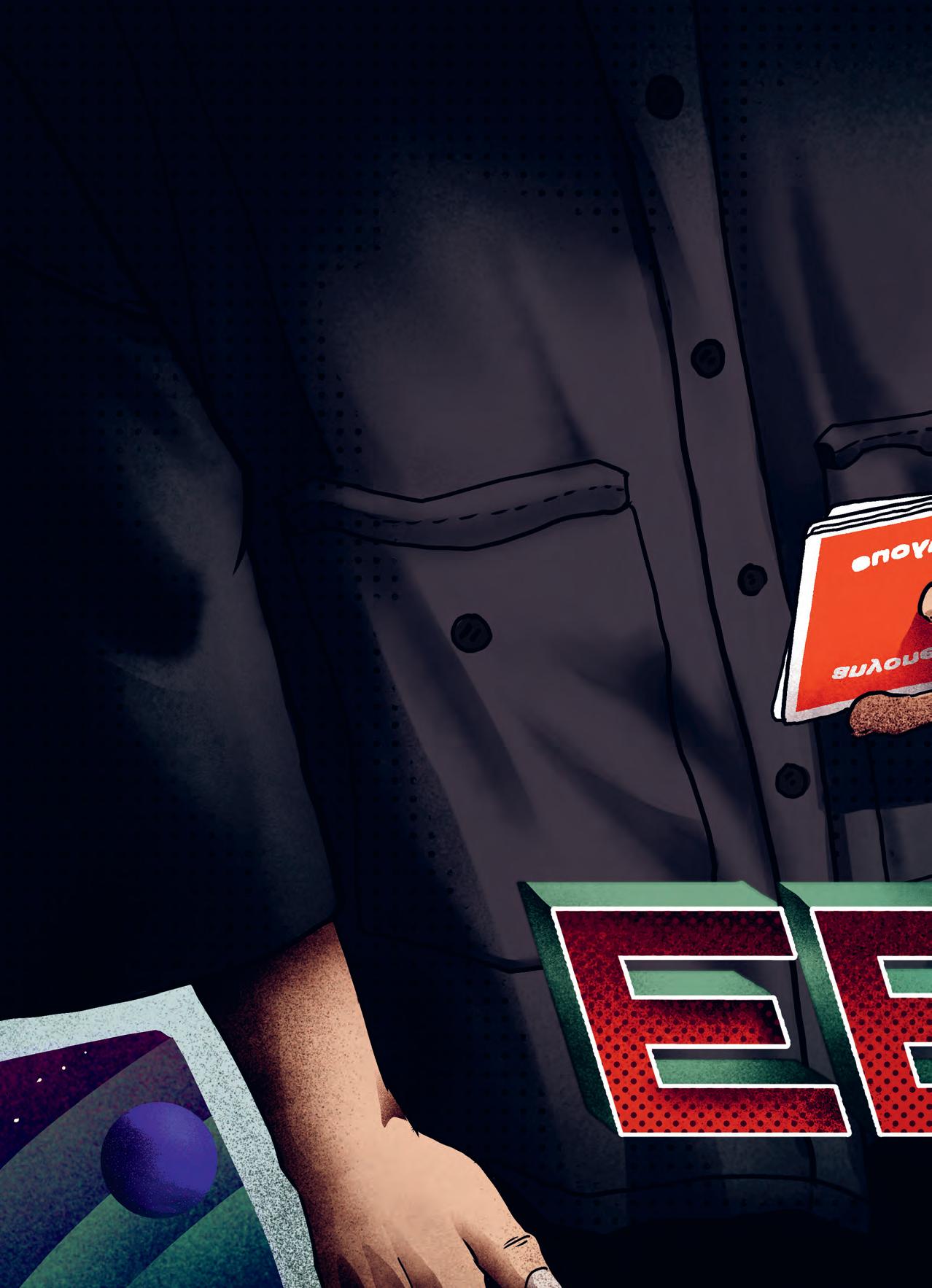
Cardistry as a kind of creativity. You either create something new (pure creativity, to contribute to art), or repeat what has already been created (for yourself, as a form of leisure).
Q. Tell us about yourself, how and when did you start cardistry. I have been into cardistry since 2009, but for about 4-5 years I just watched and did only magic tricks knowing only the cardistry base. Somewhere in 2014 I began to learn more complex movements and I liked it.
Q. What drew you to this art form? What attracts me to cardistry is that you can create, express yourself through a deck of cards.
90 THE FLOURISH |
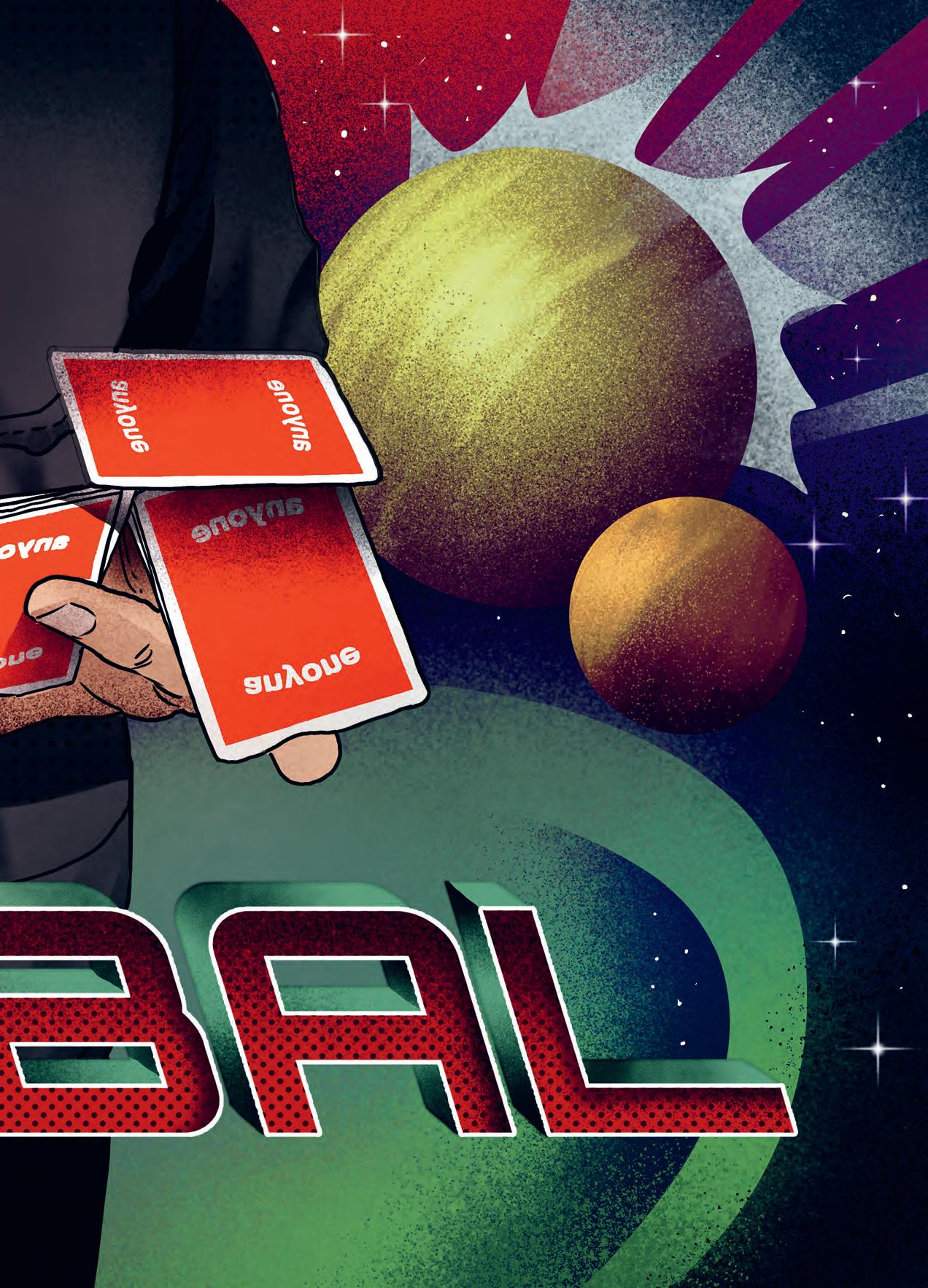
91 91 THE FLOURISH | CARDIST HIGHLIGHT: NIKITA YATSIK
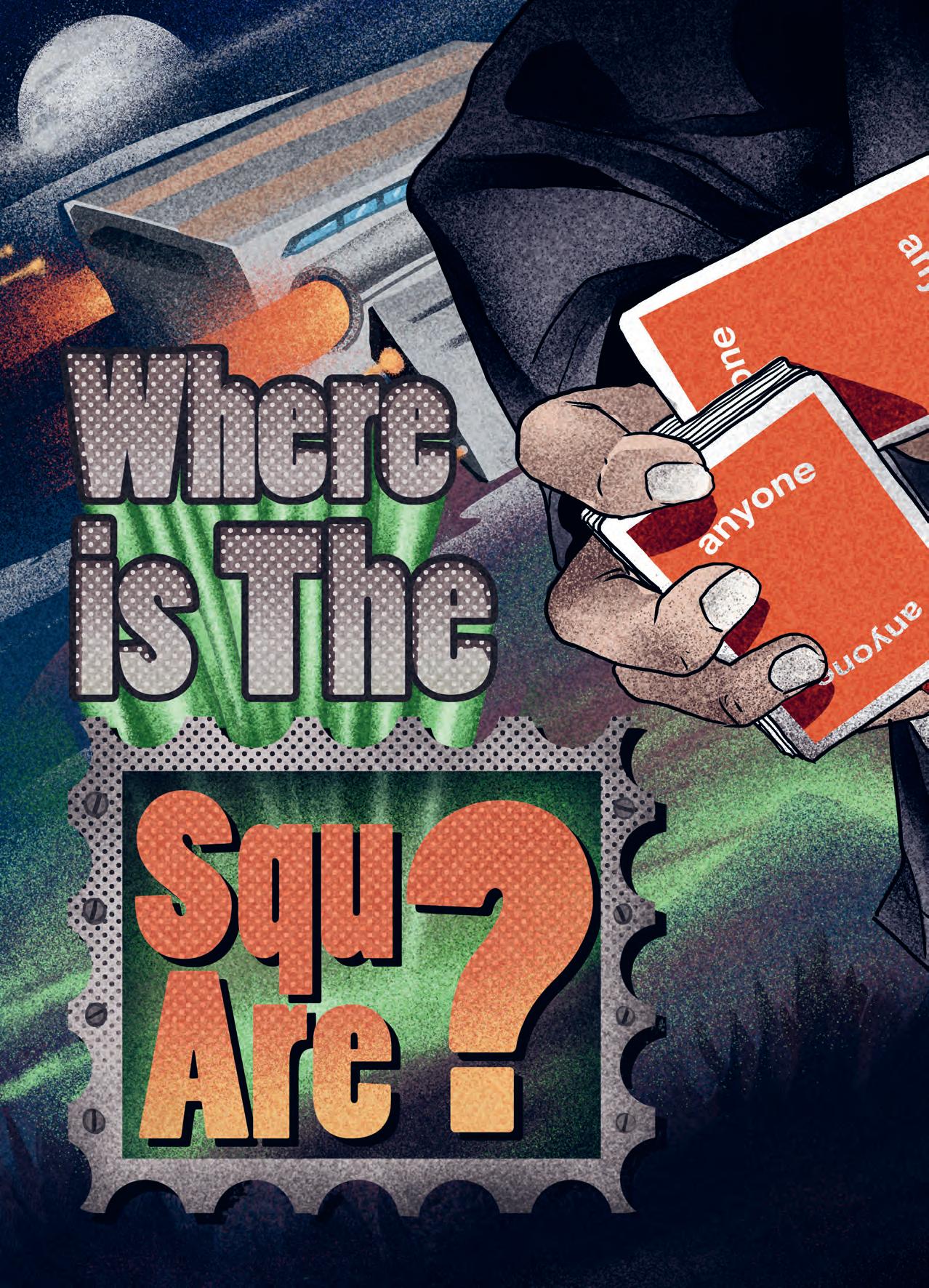
98 THE FLOURISH |
CARDIST SPOTLIGHT NIKITA YATSIK

IVANOVO, RU 21 FT CHAMP 2021 �� �� ��
Where is the square? reveals Nikita’s roots in magic as the move uses a “Tenkay Palm” in order to make each card disappear. We love how in the beginning the card appears in order to form the full square display and afterwards the structure is taken apart by making each card vanish one by one. If you like magical moves, this one is a beauty.
Q. Have you been to Cardistry Con before?

Unfortunately, I have never been to one. This is very difficult to do if you are from Russia. Coming to Cardistry-Con is one of the biggest goals for me right now. One day we will do it.
Q. What is cardistry for you?
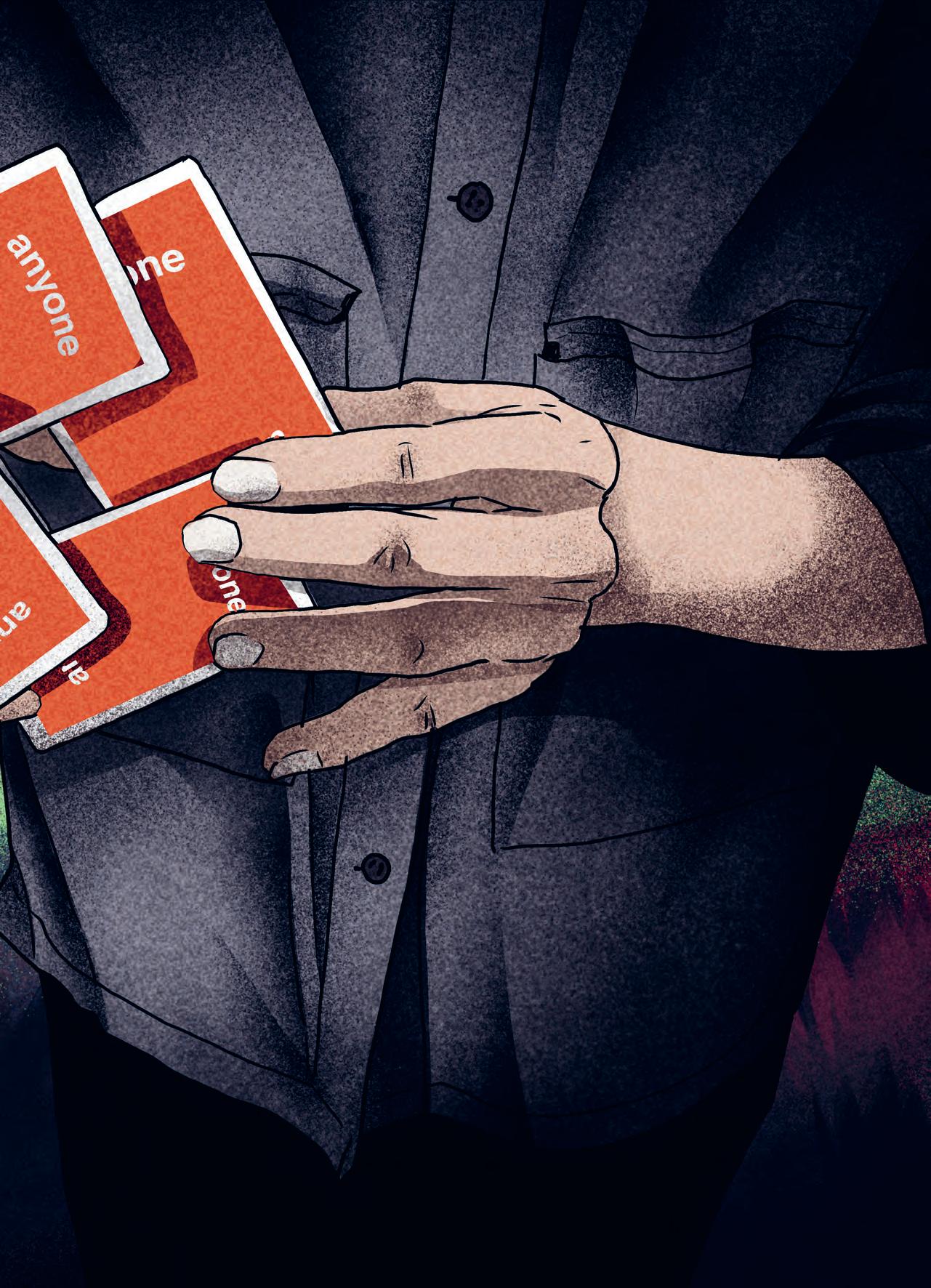
Cardistry has become a big part of life. Thanks to cardistry, other directions of my life developed, tastes for anything were formed. This is what I do every day.
Q. The music you listen to when creating or rehearsing a montage. I like to use music for cardistry without words, or with a minimum number of phrases in the song. The instrumental is much more important to me than the meaning of the song.
Q. You have any tips for beginners? Do what you really enjoy. Listen to yourself. Look for non-standard ways in creativity. Let us rest at the right moment, this can help a lot, for example, in creating moves.
>>
LEARN THE MOVES
99 THE FLOURISH | CARDIST HIGHLIGHT: NIKITA YATSIK
MAILBAG star letter
WIN!
HAVE YOUR SAY... SEND US AN EMAIL OR SUBMIT AN ARTICLE ONLINE - WWW.THEFLOURISH.NET
CLUB FLOURISH
Dear Flourish Reader, This is the place where your letter would be featured in the event that you are the lucky winner of 144 decks of playing cards. That’s 12 bricks of playing cards. Of course, they won’t all be the same deck (that would be boring!). We’ll make sure to choose a wide range so you satisfy your playing-card-hunger for a long time. But, since this is the first issue of The Flourish magazine, we don’t really have any letter to feature (sadface). Instead, Biz has taken it upon himself to write you a sort of Thank-You-For-Reading-AndBuying-This-Magazine-With-YourHard-Earned-Cash type of letter (this is actually him writing about himself in third person - very Ibrahimovici of him, but we’ll pardon him since he actually does look a bit like Ibrahimovici).
the flourish
If you’ve read the whole magazine, buy another copy and give it as a gift to someone you love. If you haven’t read the whole magazine, we do not condemn you. We too indulge in the collection of books and magazines which we “might read” at some point in the future. You know how it goes, “if the cover is cool, then it doubles as an ornament on your coffee table”.
Elisav Bizau
And here our reply to your submission will come. This is where we will bond with you and throw 144 decks in your direction. So, what are you waiting for? Go to your mail-box right now and send us an email! You can’t win 12 bricks if you just read, so write write write!
Editorial Editor Bizau “Biz” Vasile Cristian elisavbizau@gmail.com
+40736068584
Art Editor Iulia “Kuki” Bucsar
Production Editor Bizau “Mom” Lacramioara
Photographer Andrei “Obin” Iveghes
Proofreaders Everyone
Contributors
Writing Kevin Ho, Wen Xiu, Harapan Ong, Pablo Frey, Christiaan Hau, Yang Nguyen, Nathan Nguyen, Popa Liviu Stefan, Matei Ionescu, Sorin Vestemean, Huron Low, Patrick Varnavas, Joe Feldpausch, Day Mori, Matthew Samuel, Michael Warneke, Konstantin Kakayak, Luke Wadey, Weston Hamilton
Art Hendi Herdianto
Cardistry Tutorials Nikita Yatsik
International
The Flourish is available for licensing. Contact us to discuss partnership opportunities.
International Licensing Director Biz elisavbizau@gmail.com
Subscriptions
Email enquiries elisavbizau@gmail.com
Online orders & enquiries www.theflourish.net
Advertising
Media packs are available on request
Commercial Director Ghisa Adrian r.adrianghisa@gmail.com
Advertisers Kardify, Kings Wild Project, Cardpenter, Kevin Ho, 52 Plus Joker, OPC Playing Cards


Distributed by Biz and Friends
Biz wants to read your letter but, until then, he will read some Tally Ho’s.

Printed in Romania 2023 Launch Issue
Don’t forget to follow us online for more cardistry projects:
FACEBOOK: BIZANDFRIENDS INSTAGRAM: @BIZANDFRIENDS
100 THE FLOURISH |
* ◼ ��
Every year, one writer-inlucky will receive a staggering 144 decks of playing cards

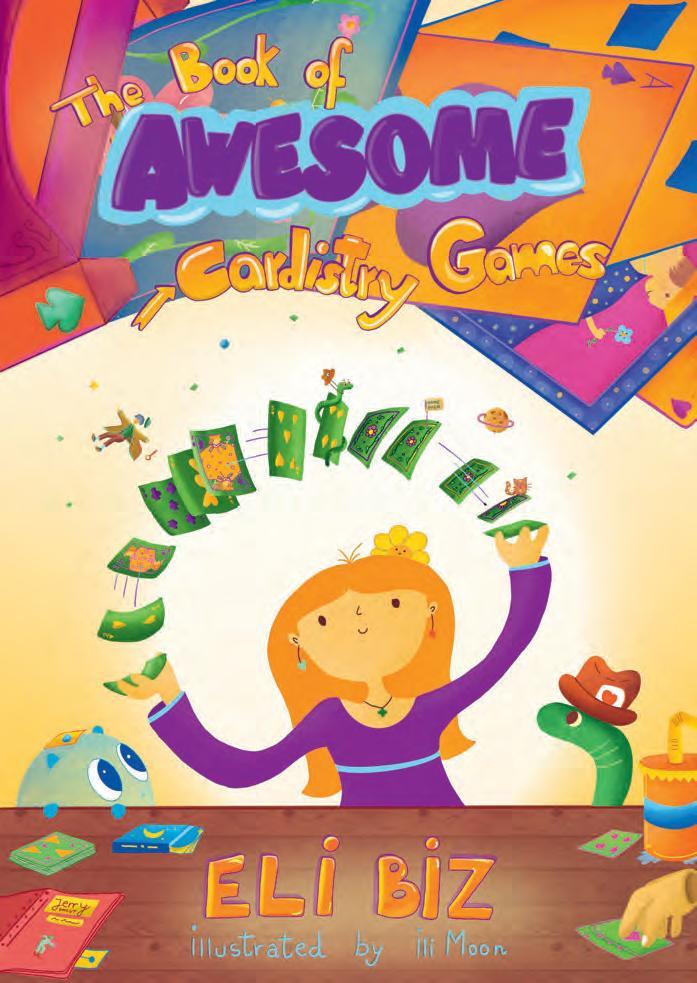
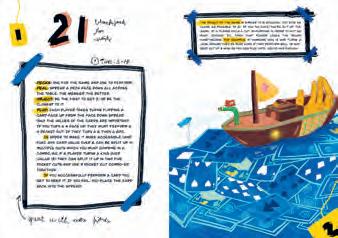
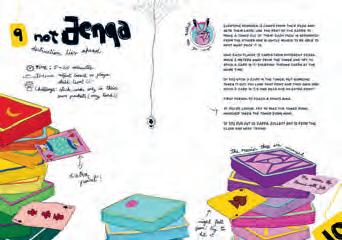
The book every jam and convention is looking for! Over 20 cardistry games anyone can play www.bizandfriends.com OUT NOW
Unleash the full potential of your cardistry with the help of
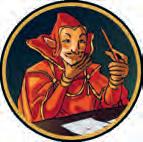
THE CARDISTRY CARD GAME

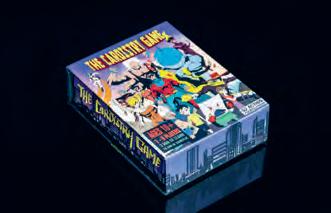
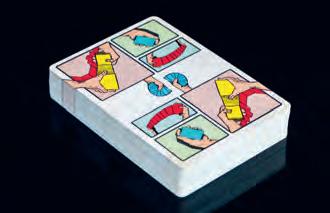
$15.99 for just
Unleash the full potential of your cardistry with the help of Unleash the full potential of your cardistry with the help of Unleash the full potential of your cardistry with the help of Unleash the full potential of your cardistry
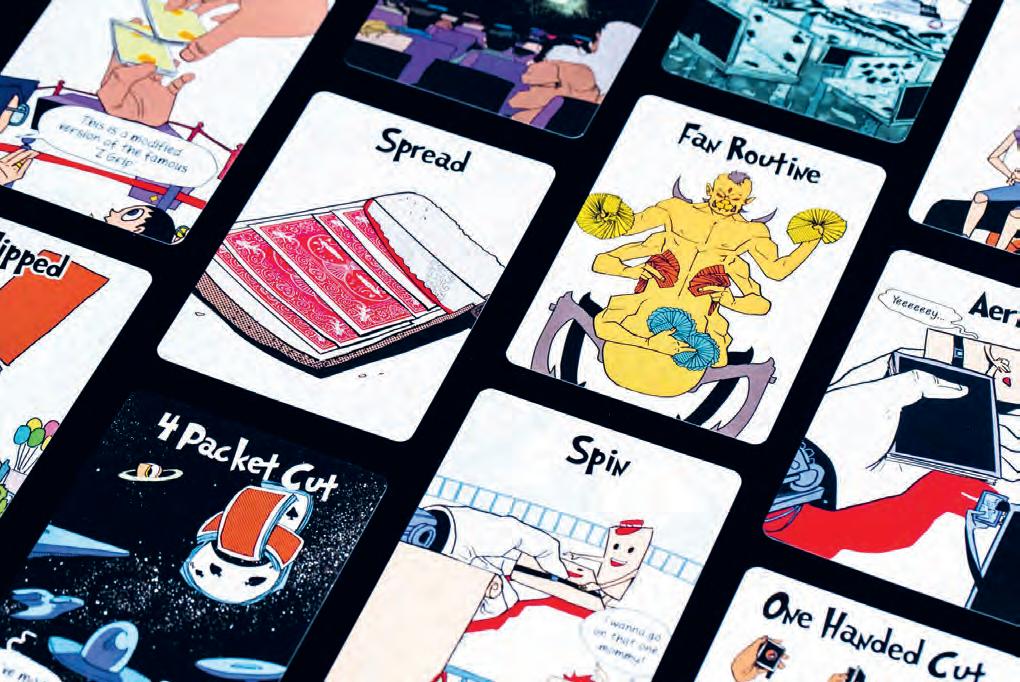
get yours now like, right now! www.bizandfriends.com
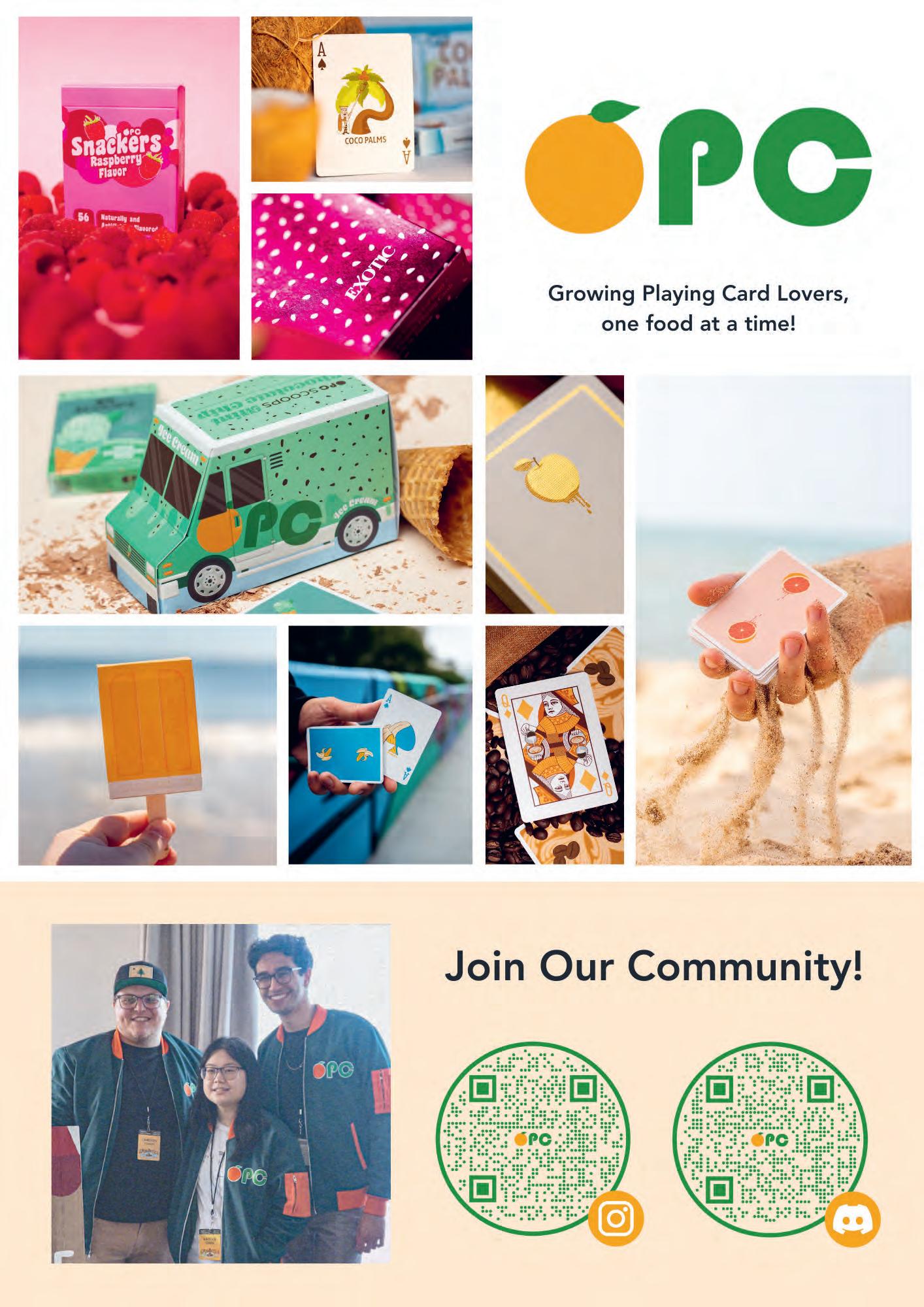













 by Kevin Ho
by Kevin Ho




































































































 With Matthew Samuel The Unfolding
With Matthew Samuel The Unfolding








































